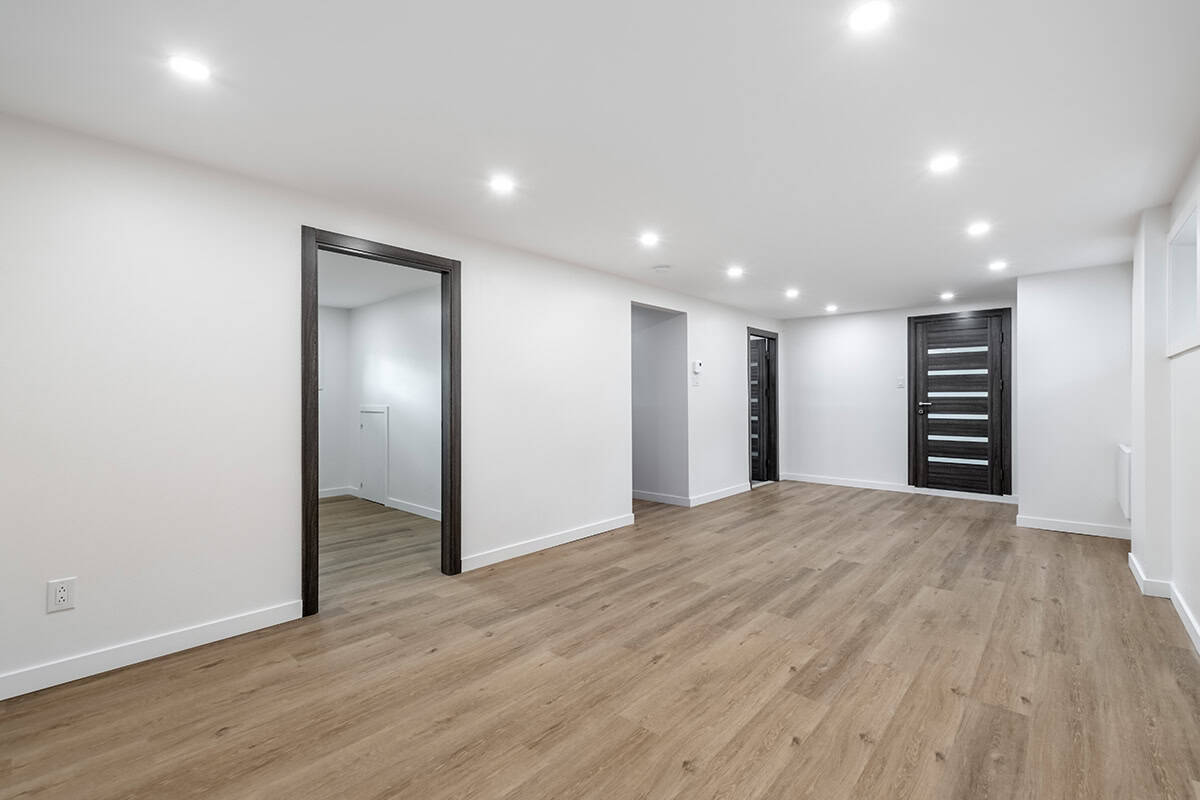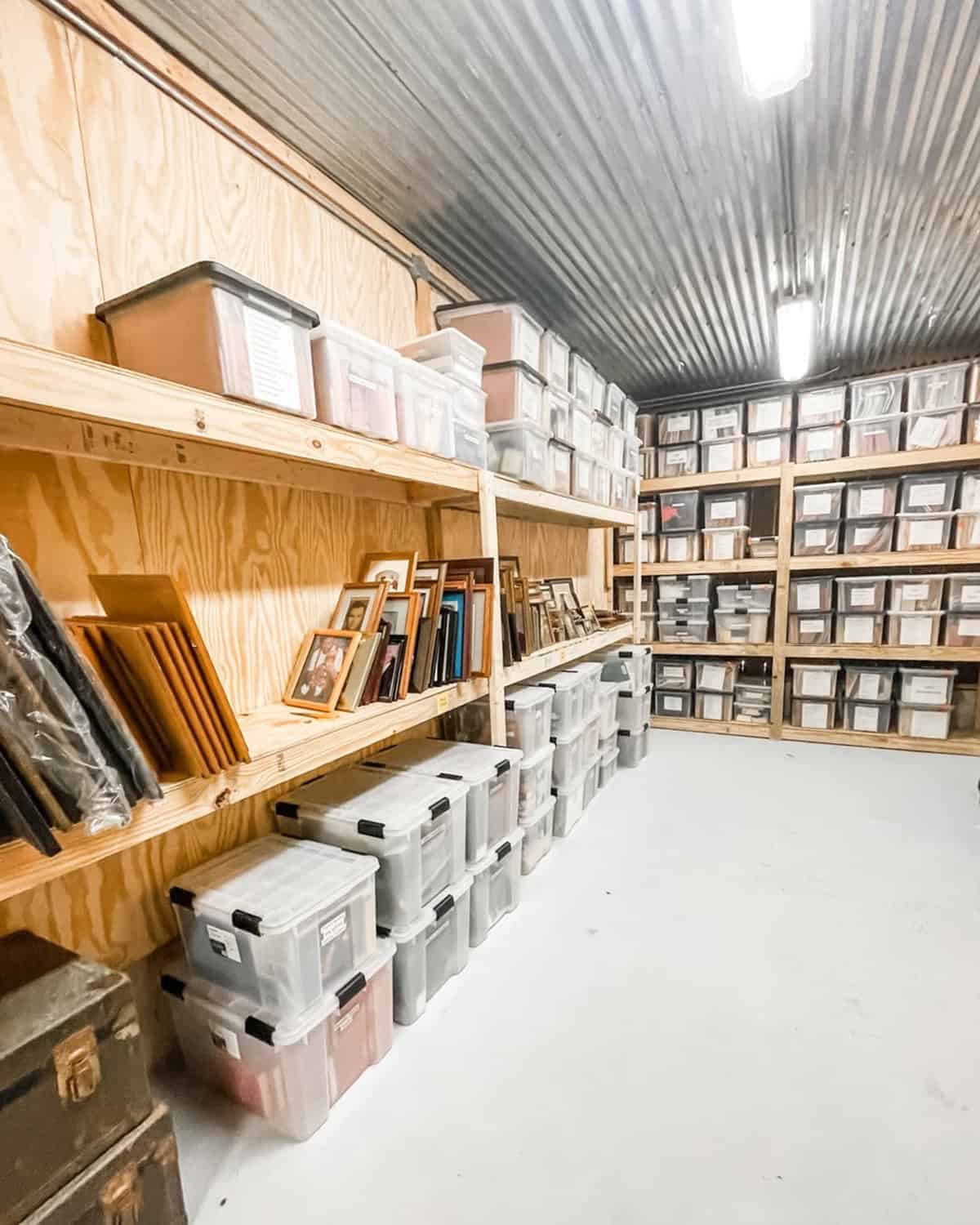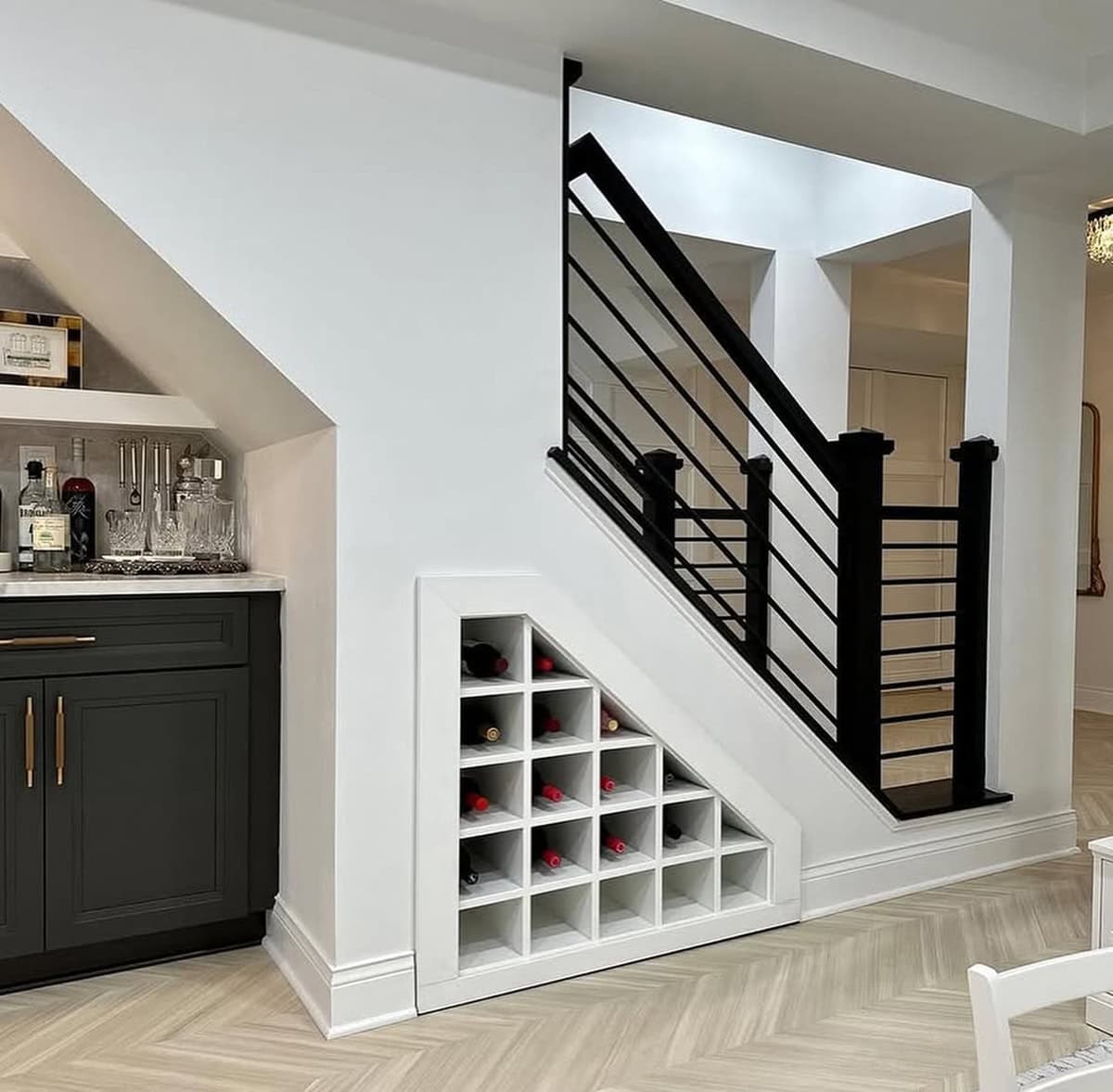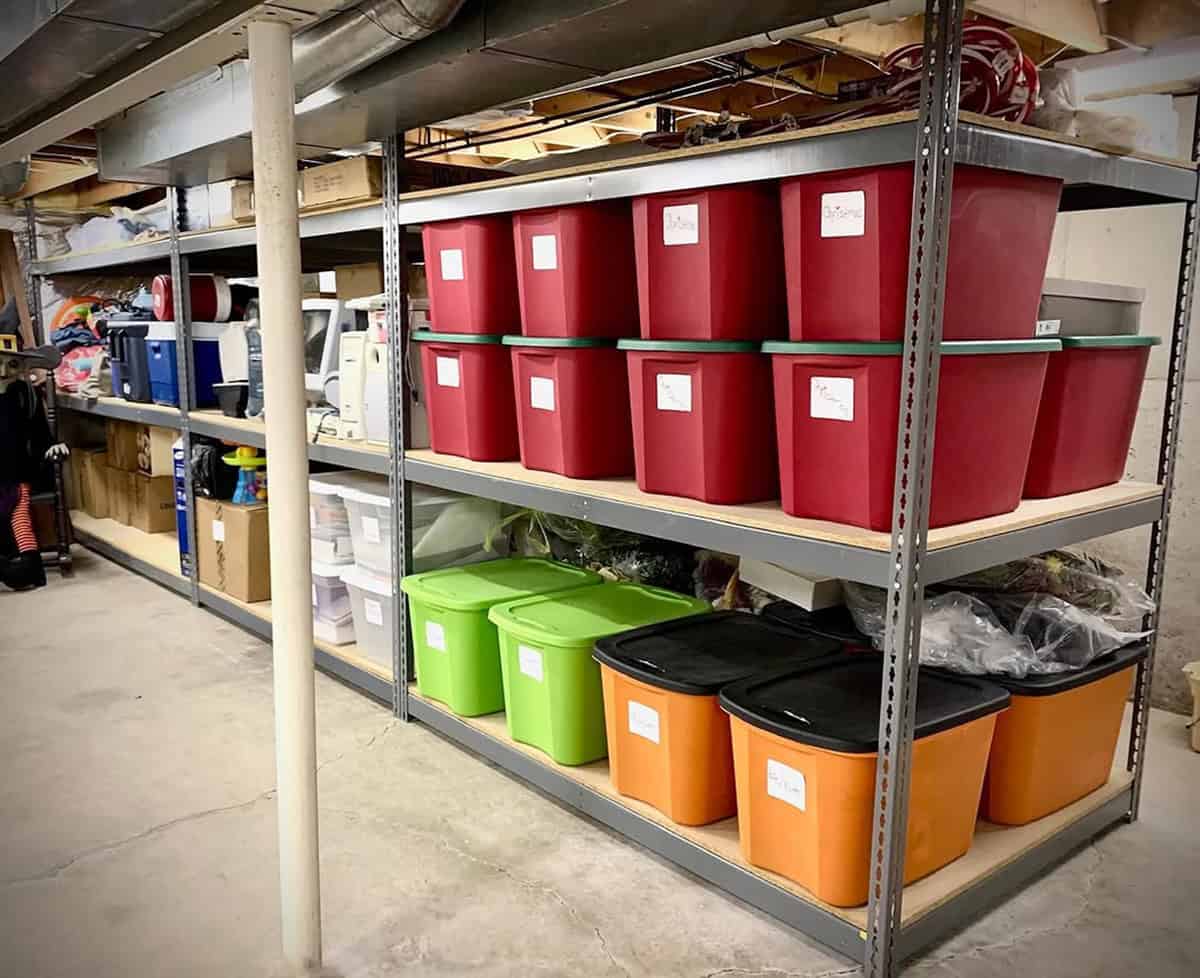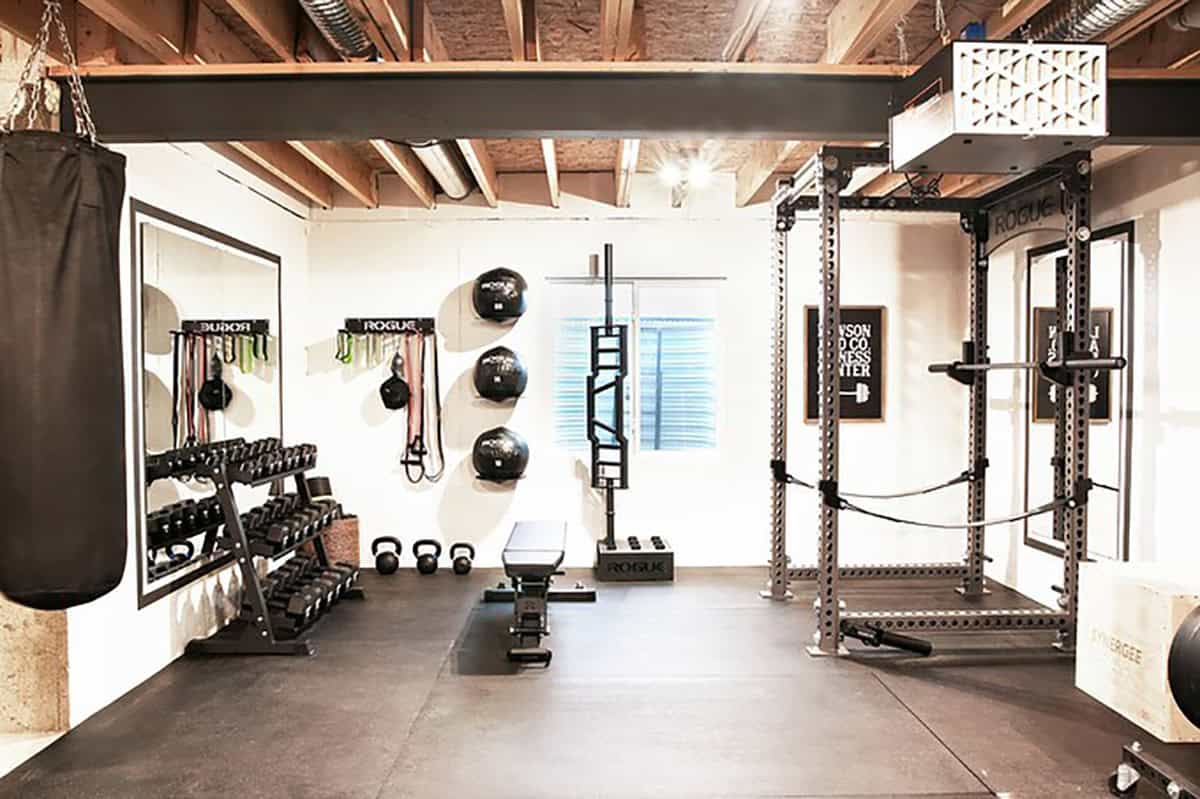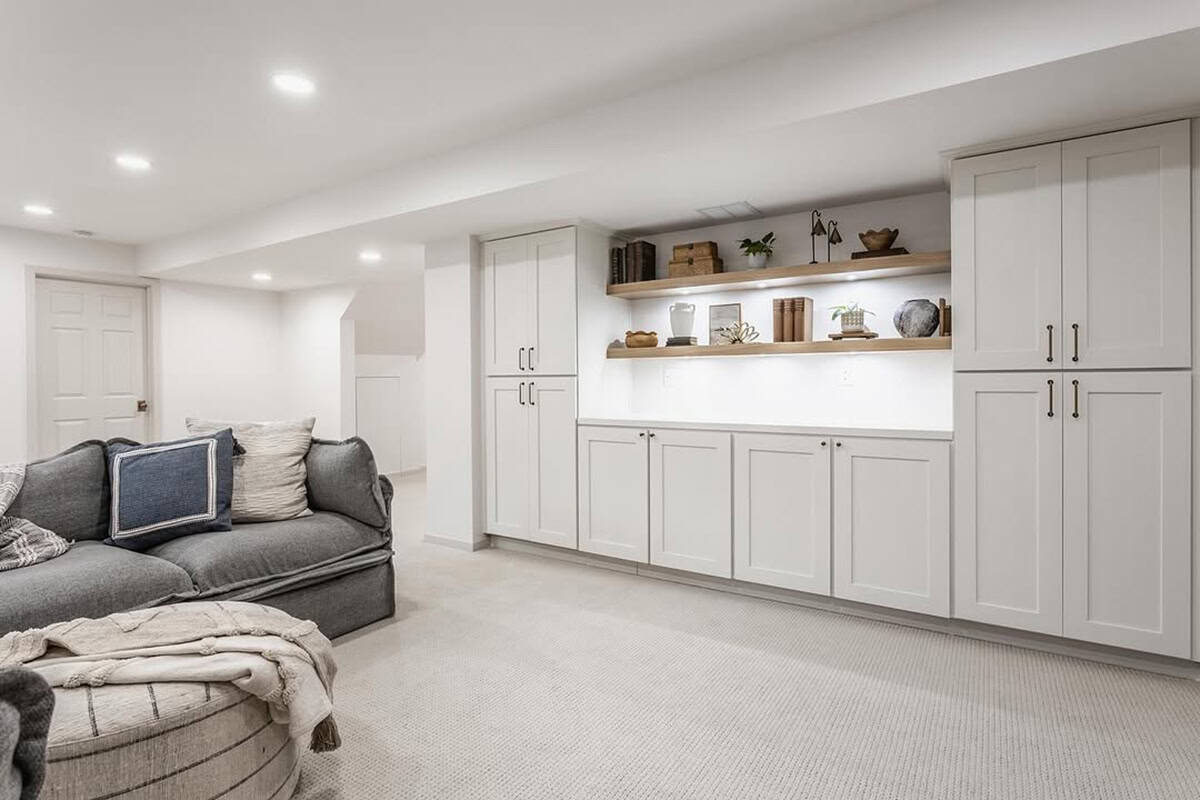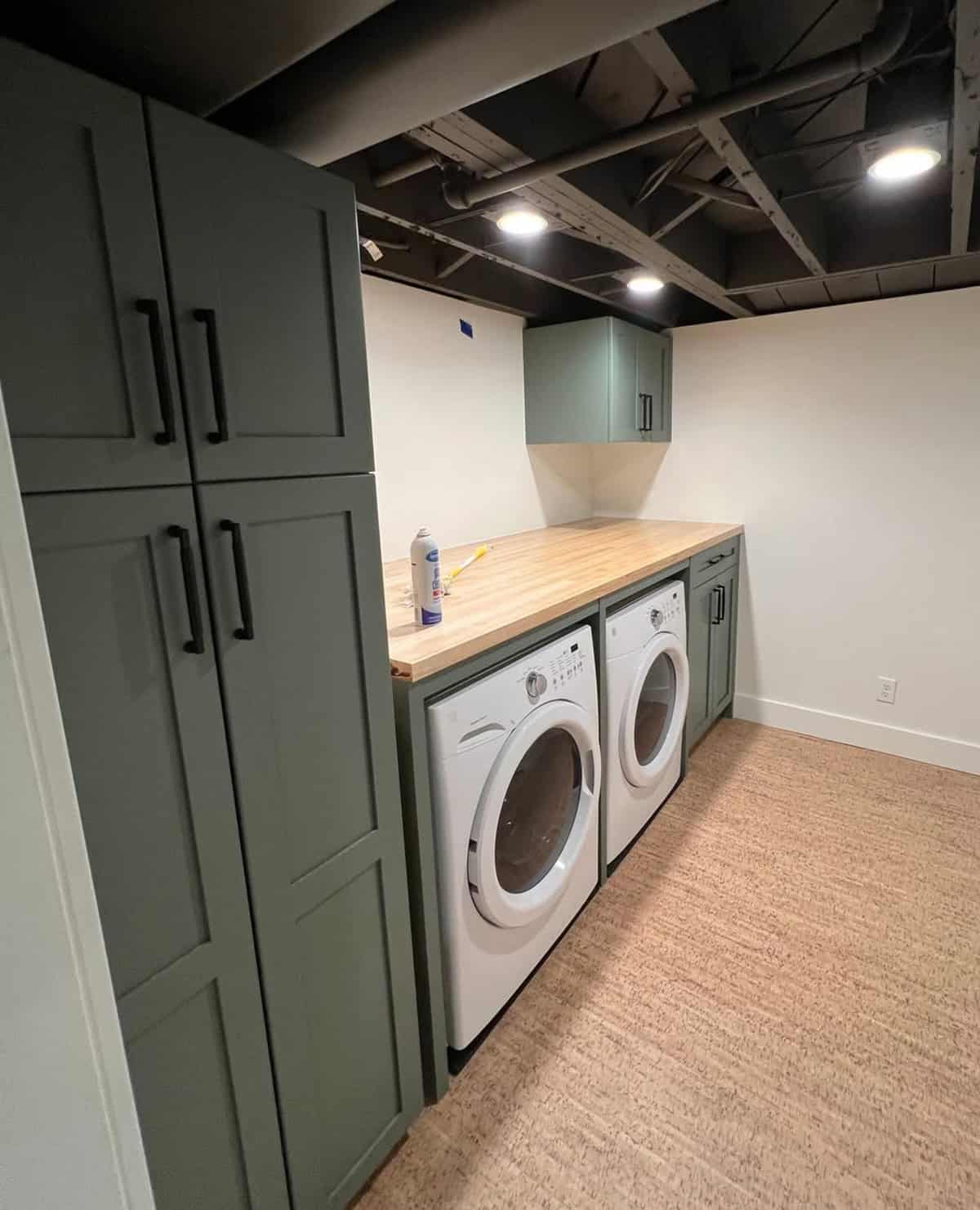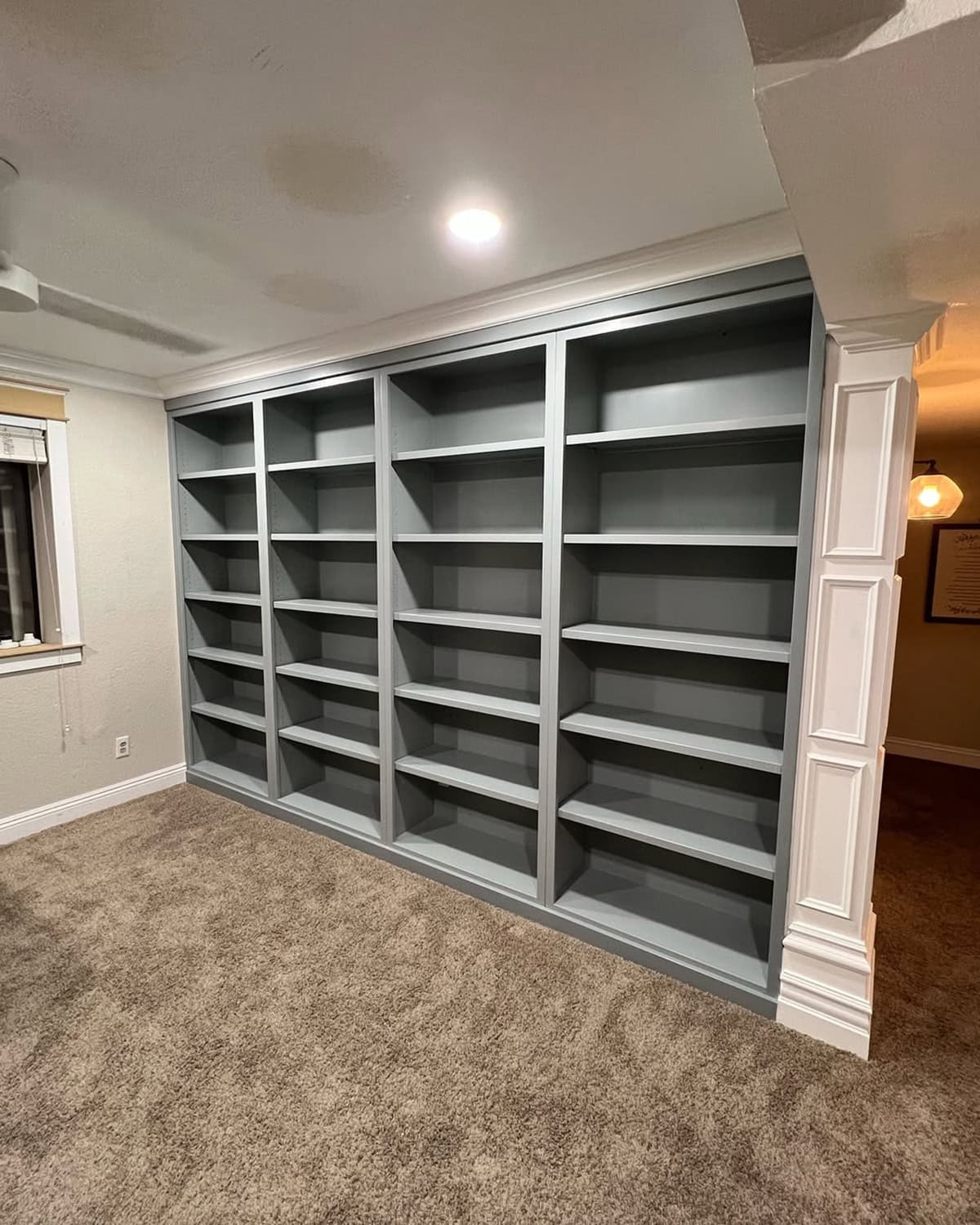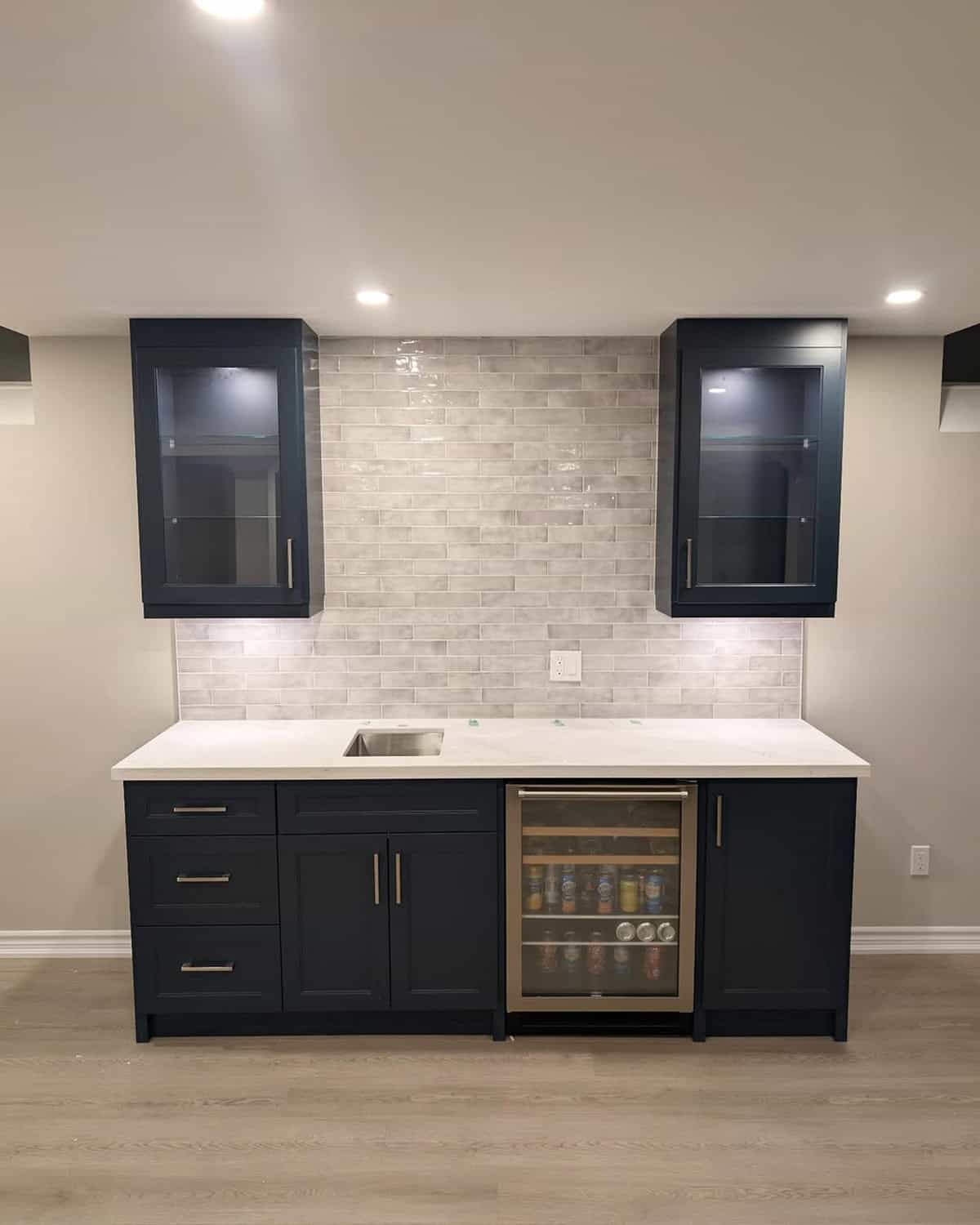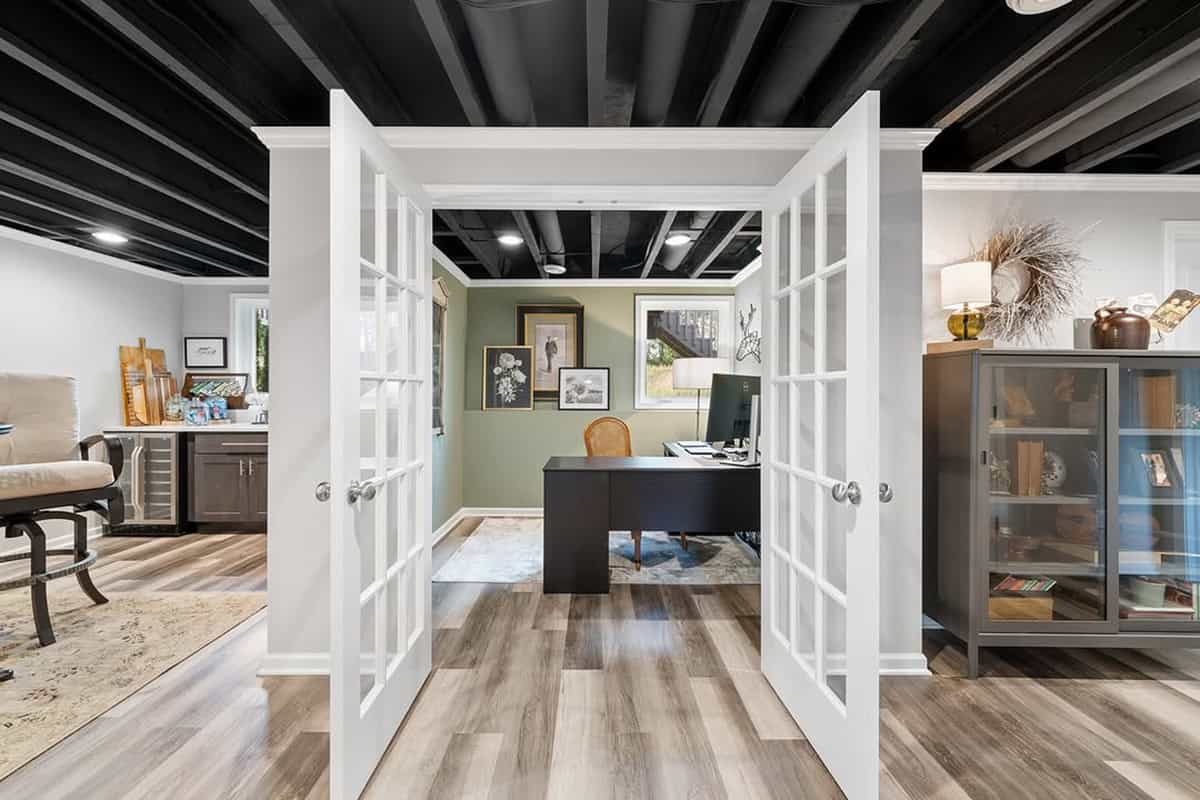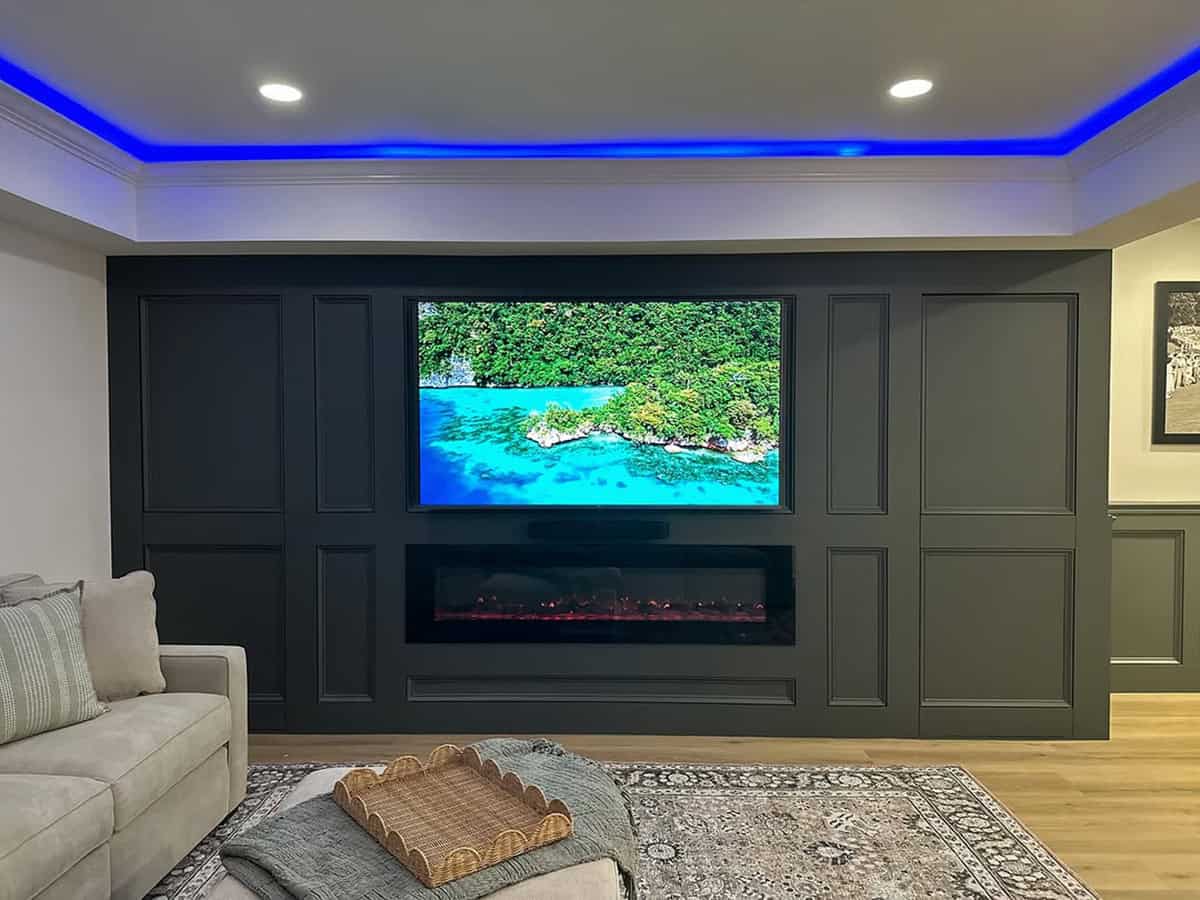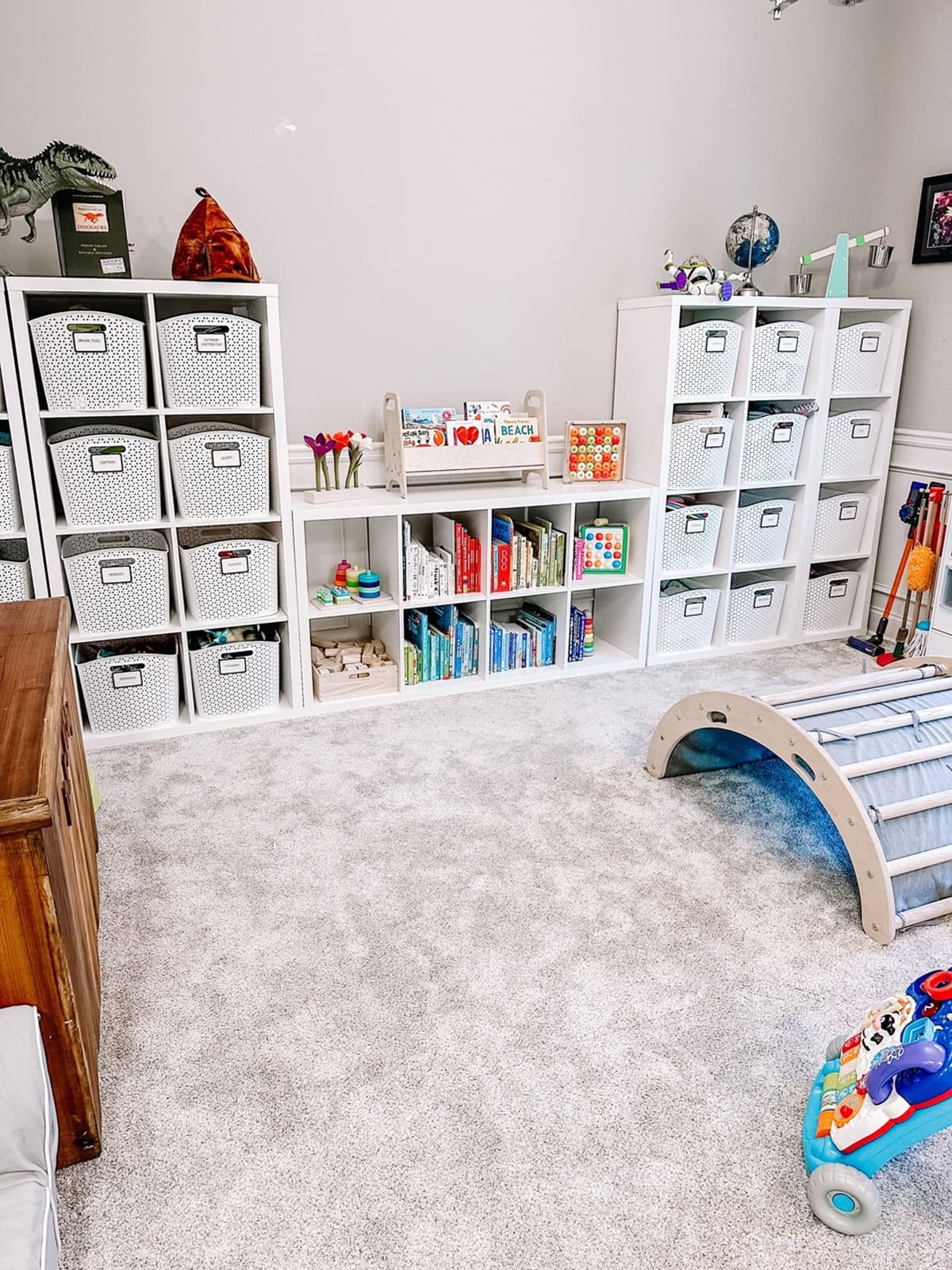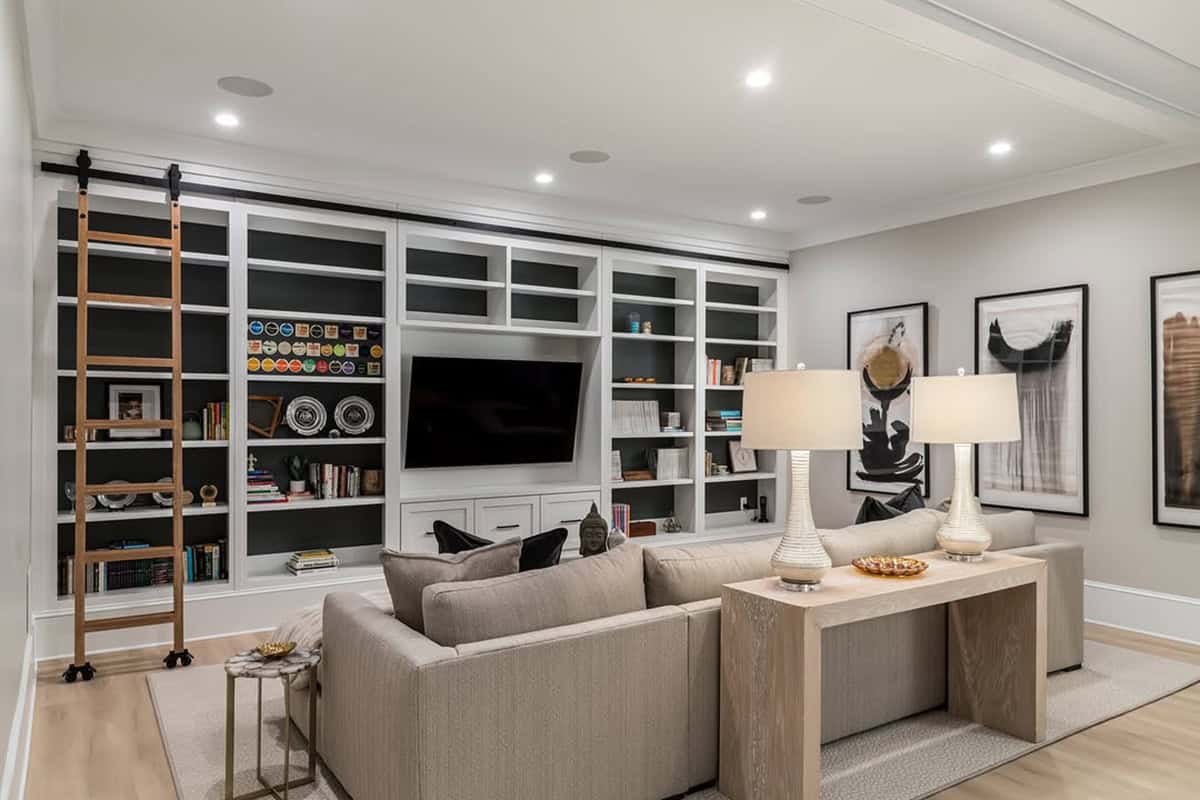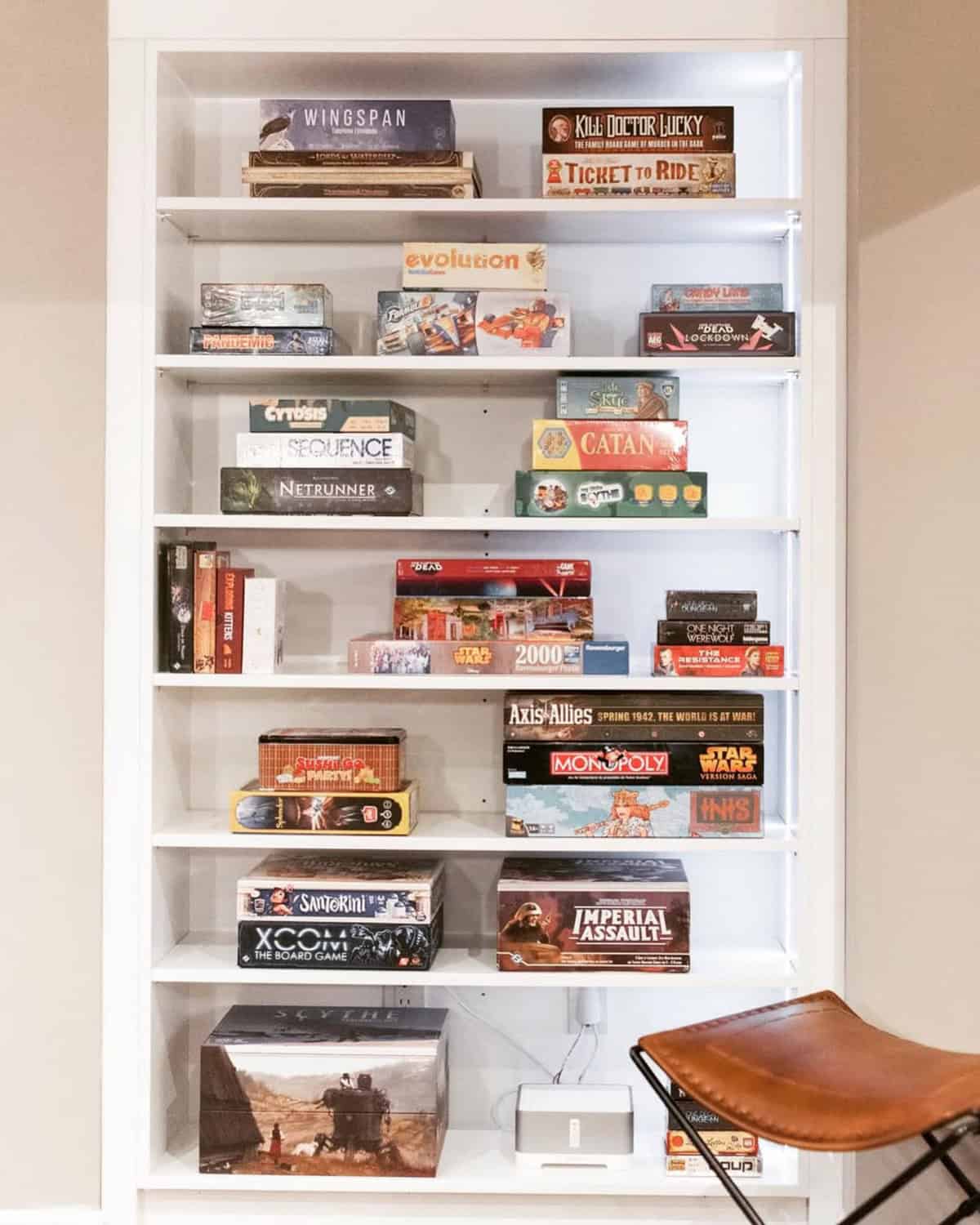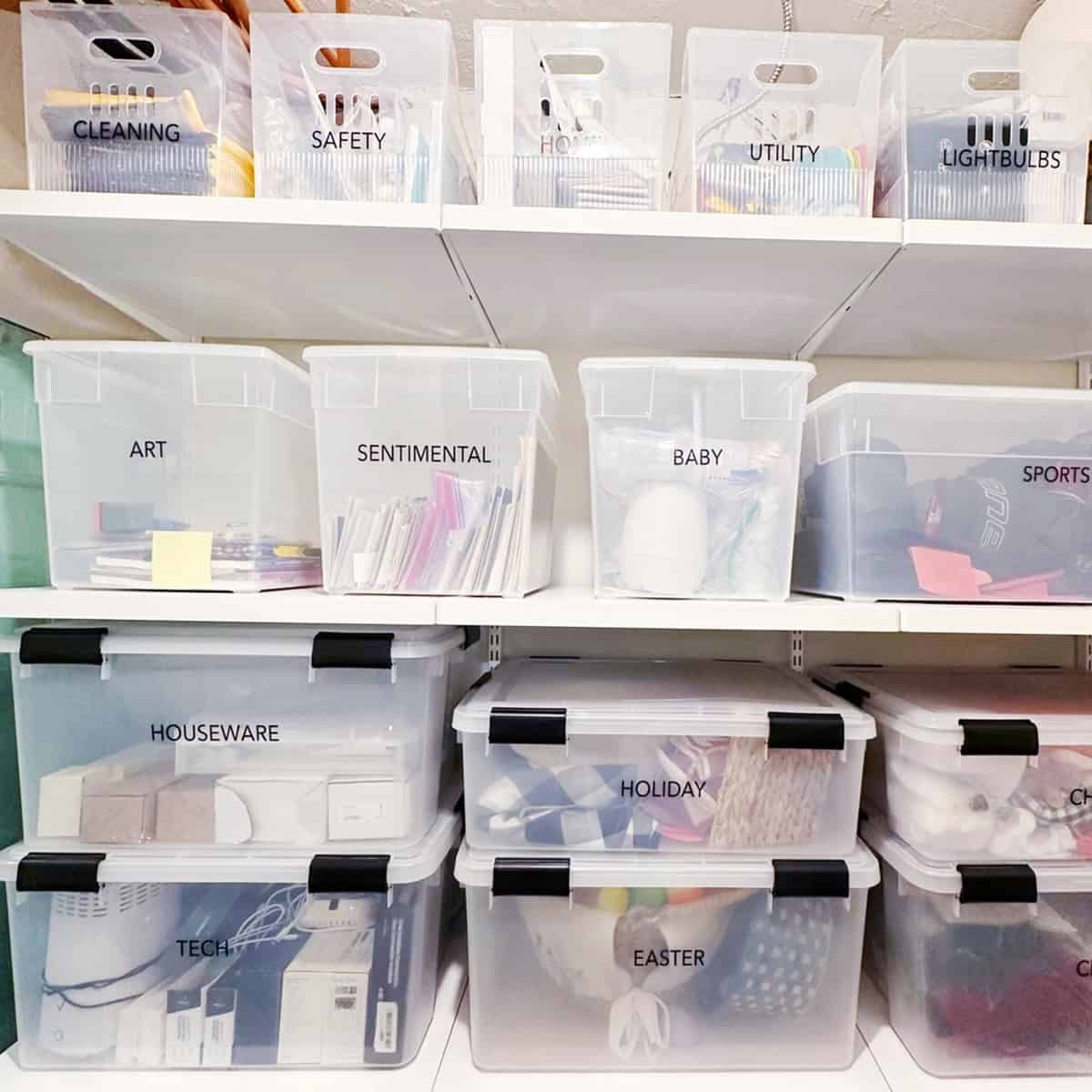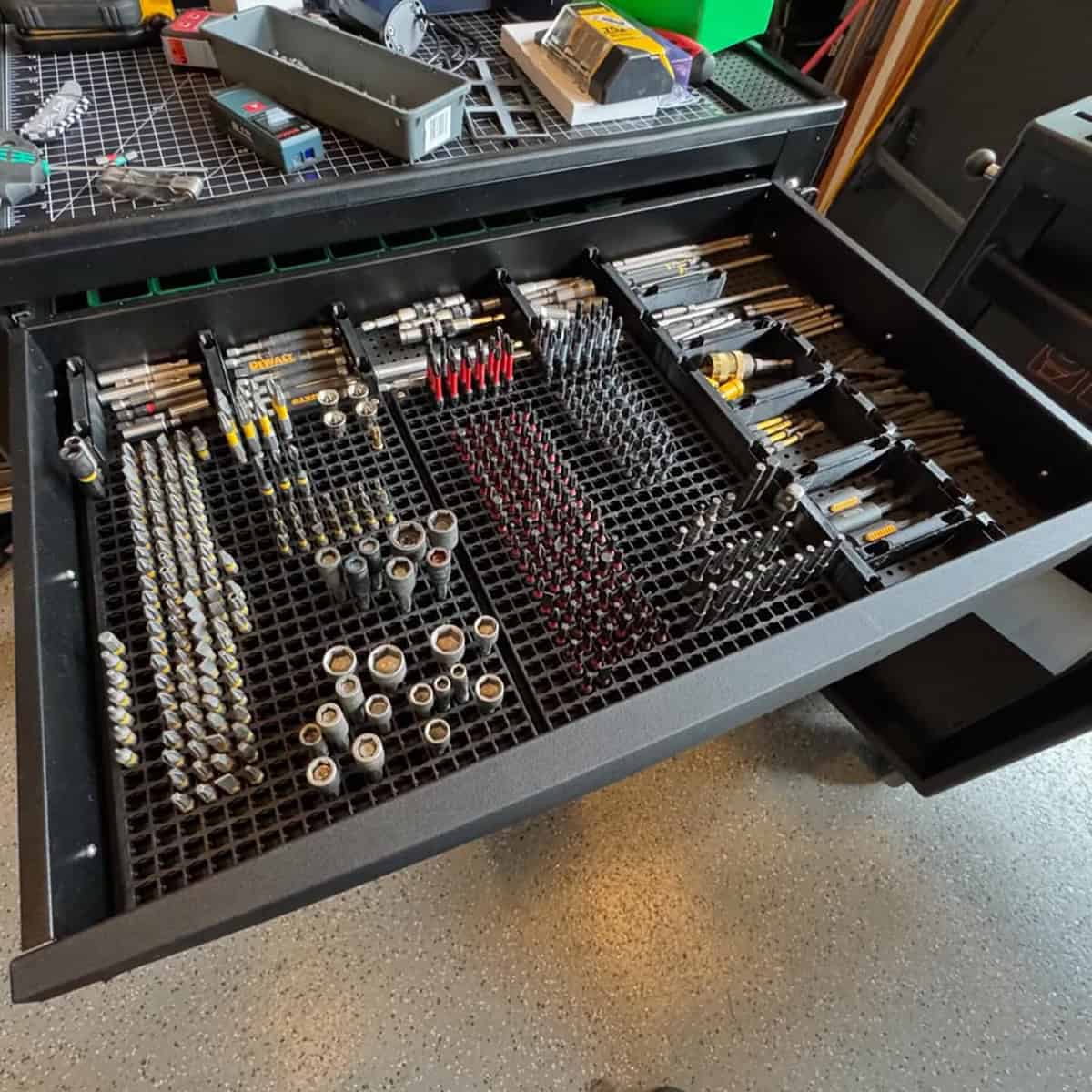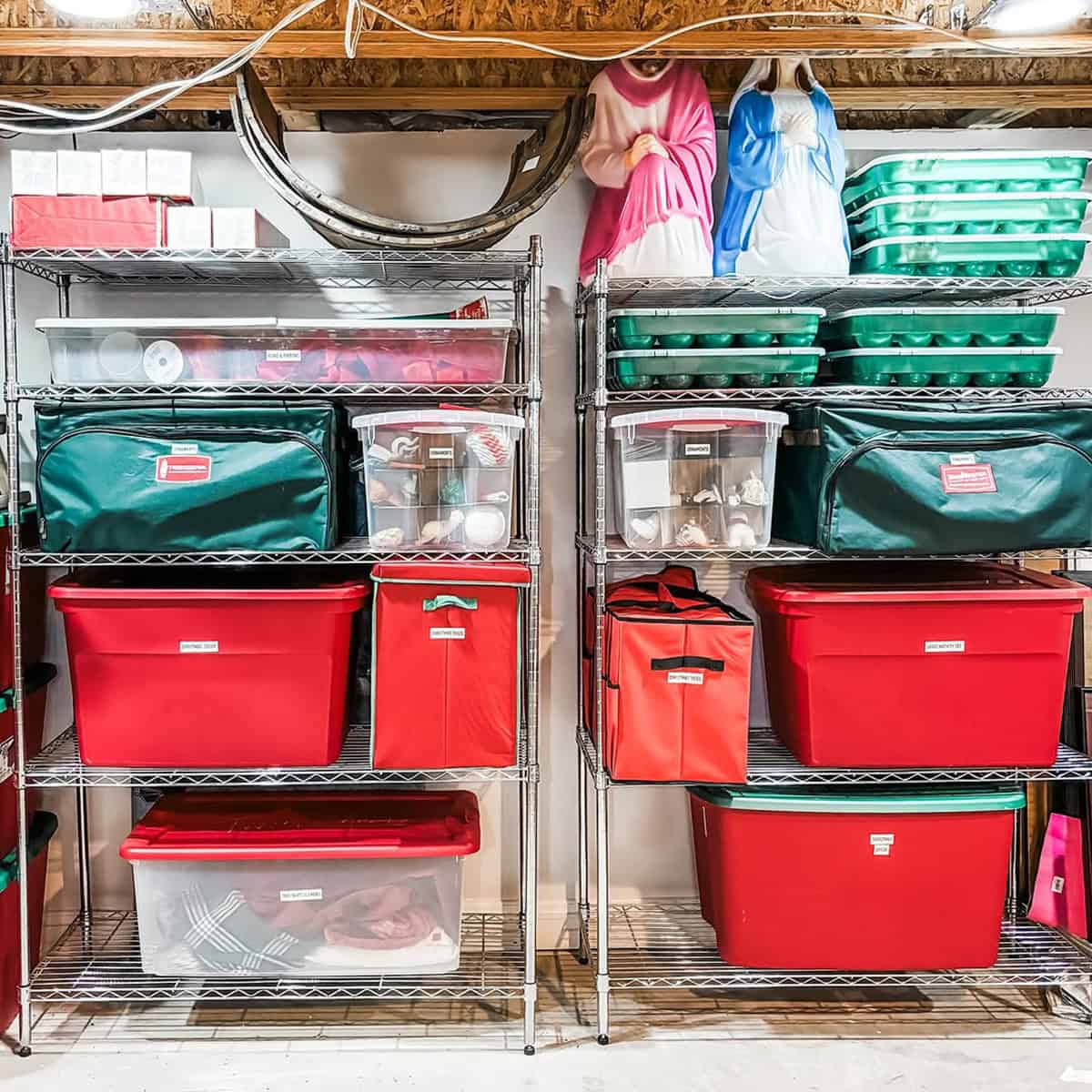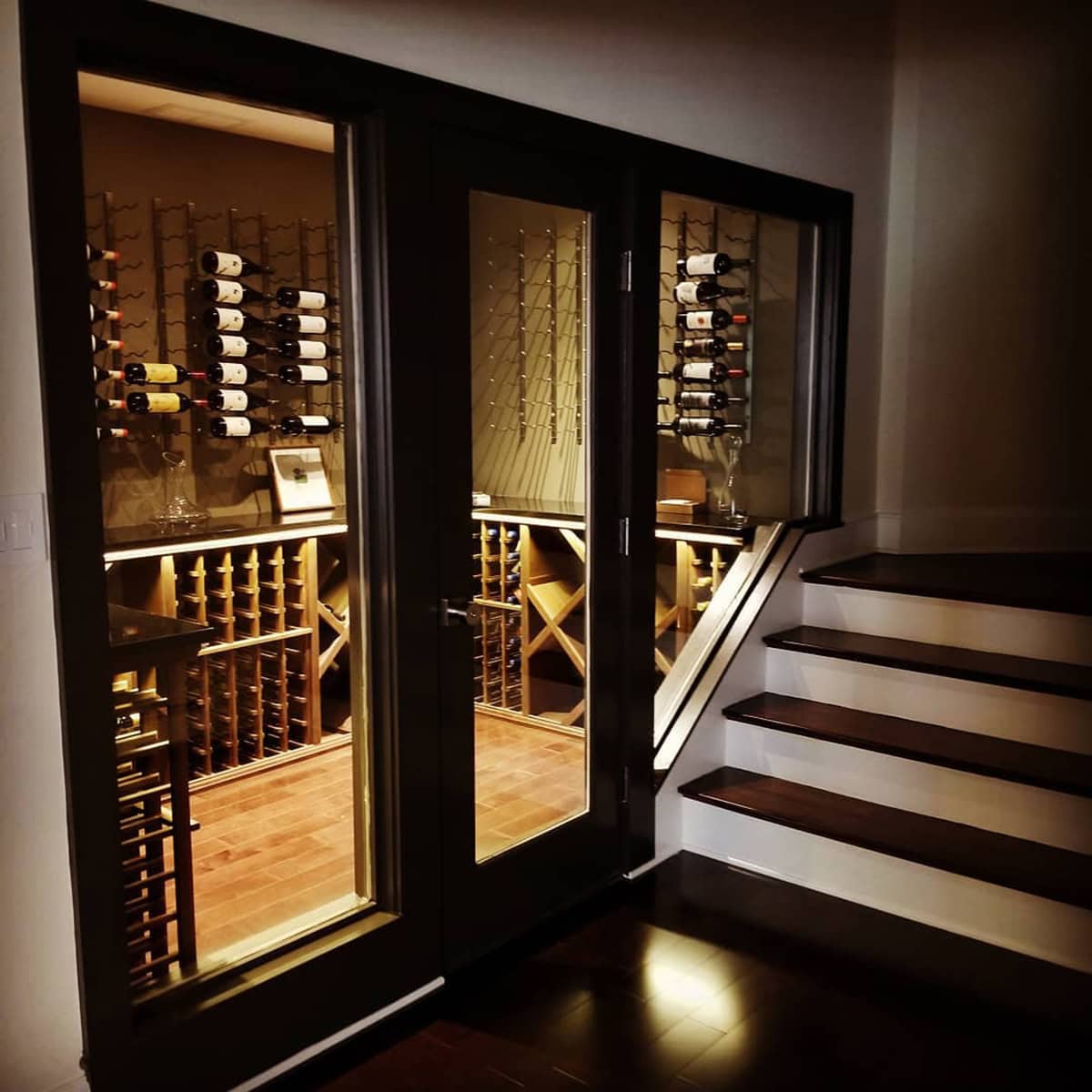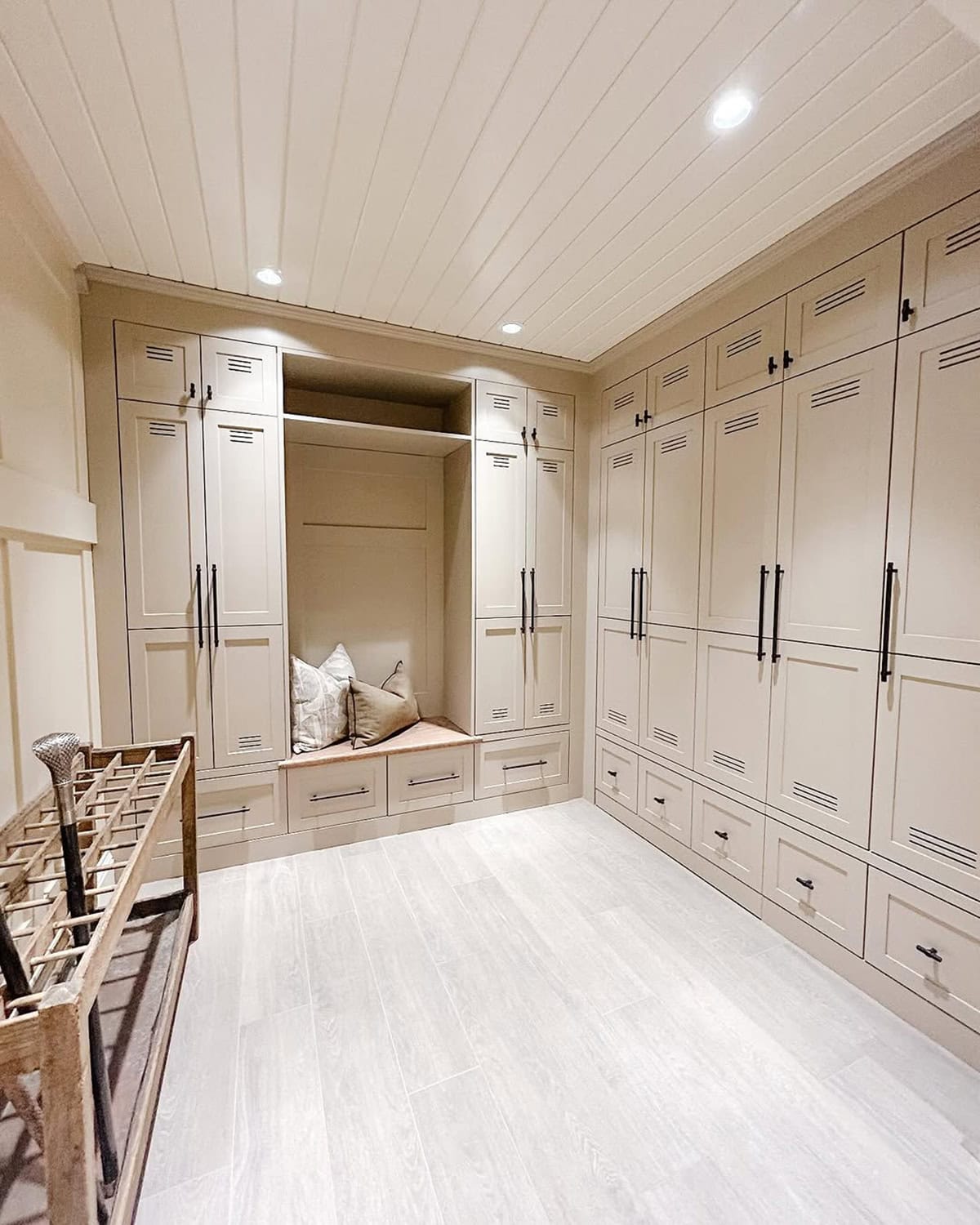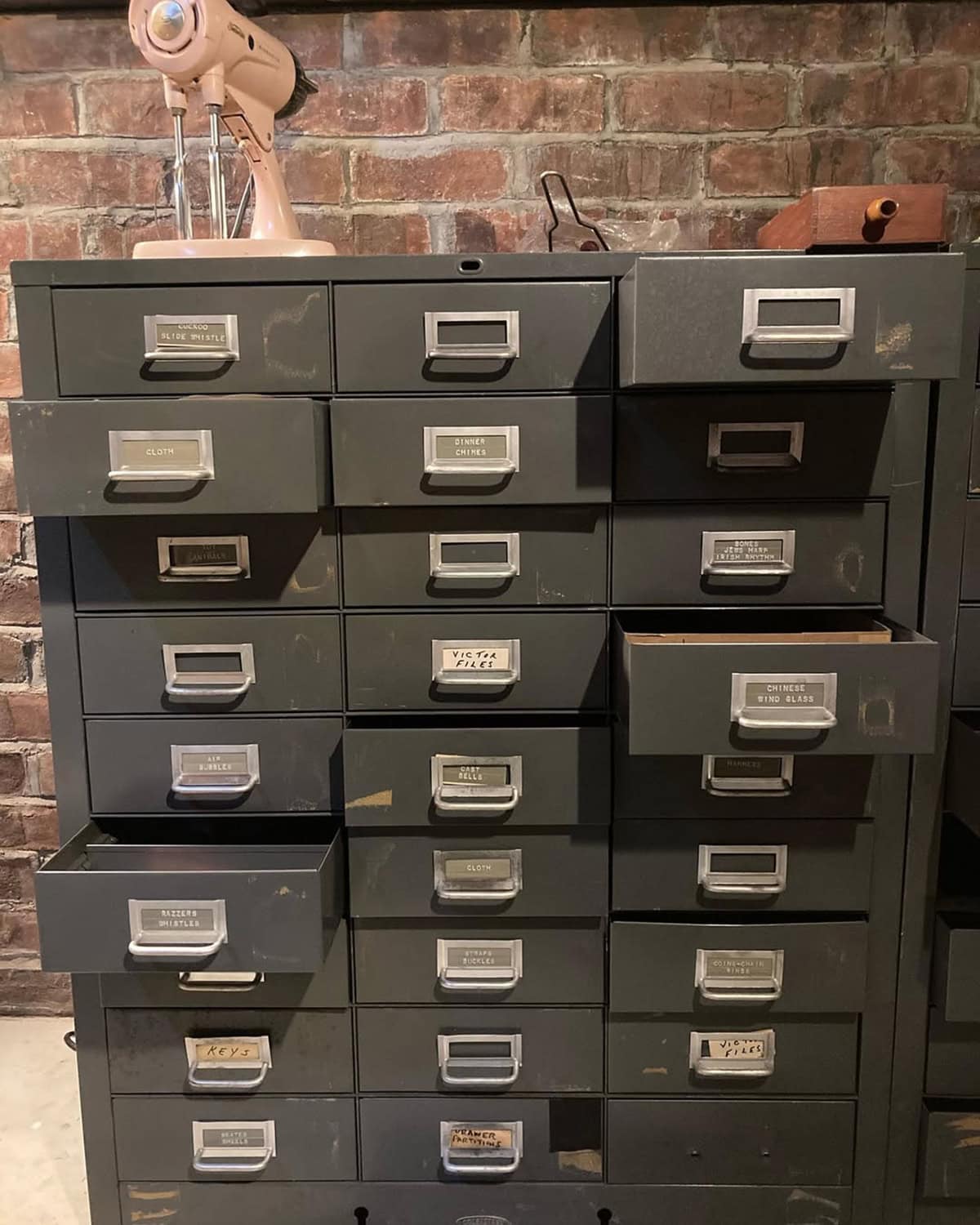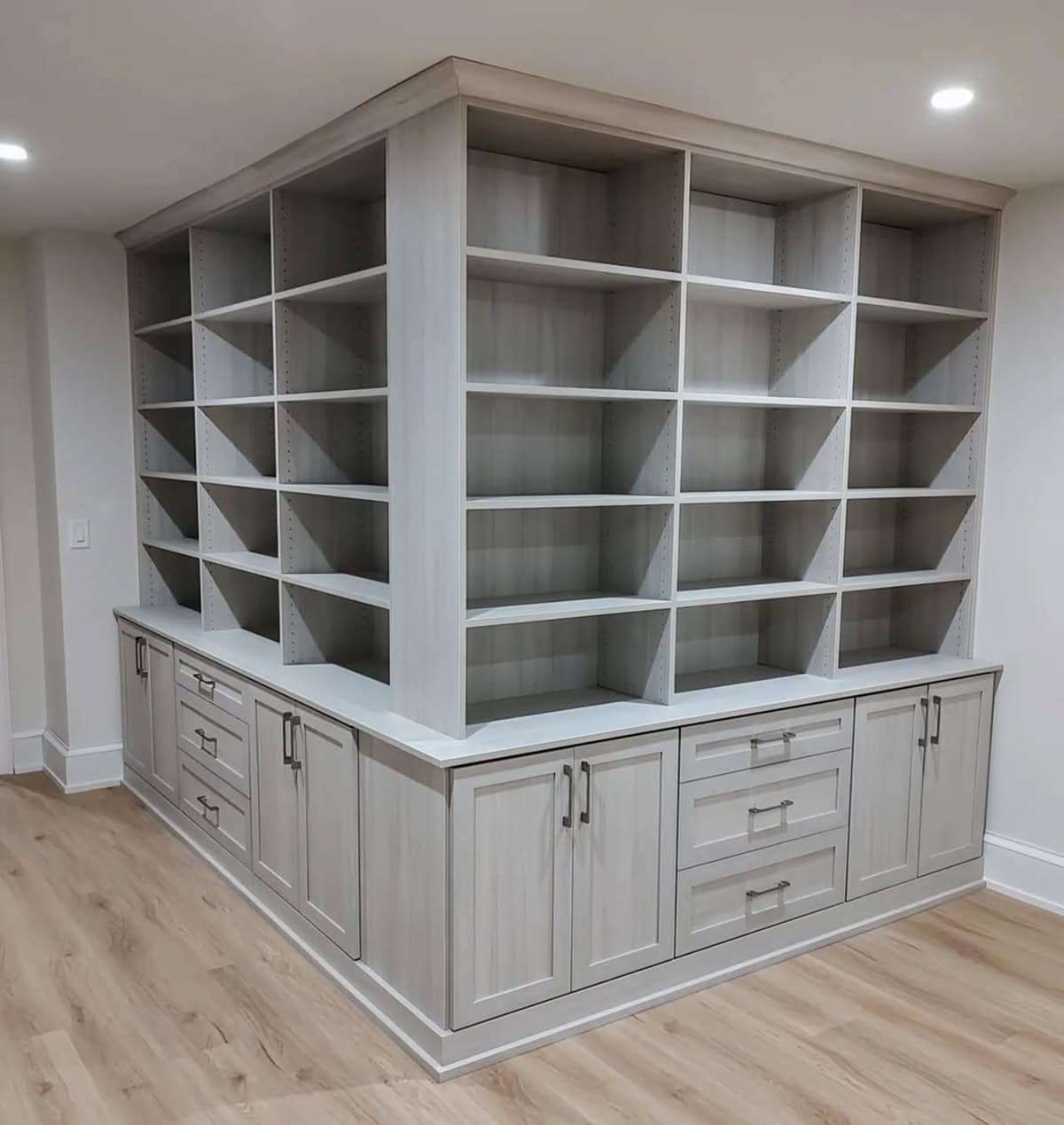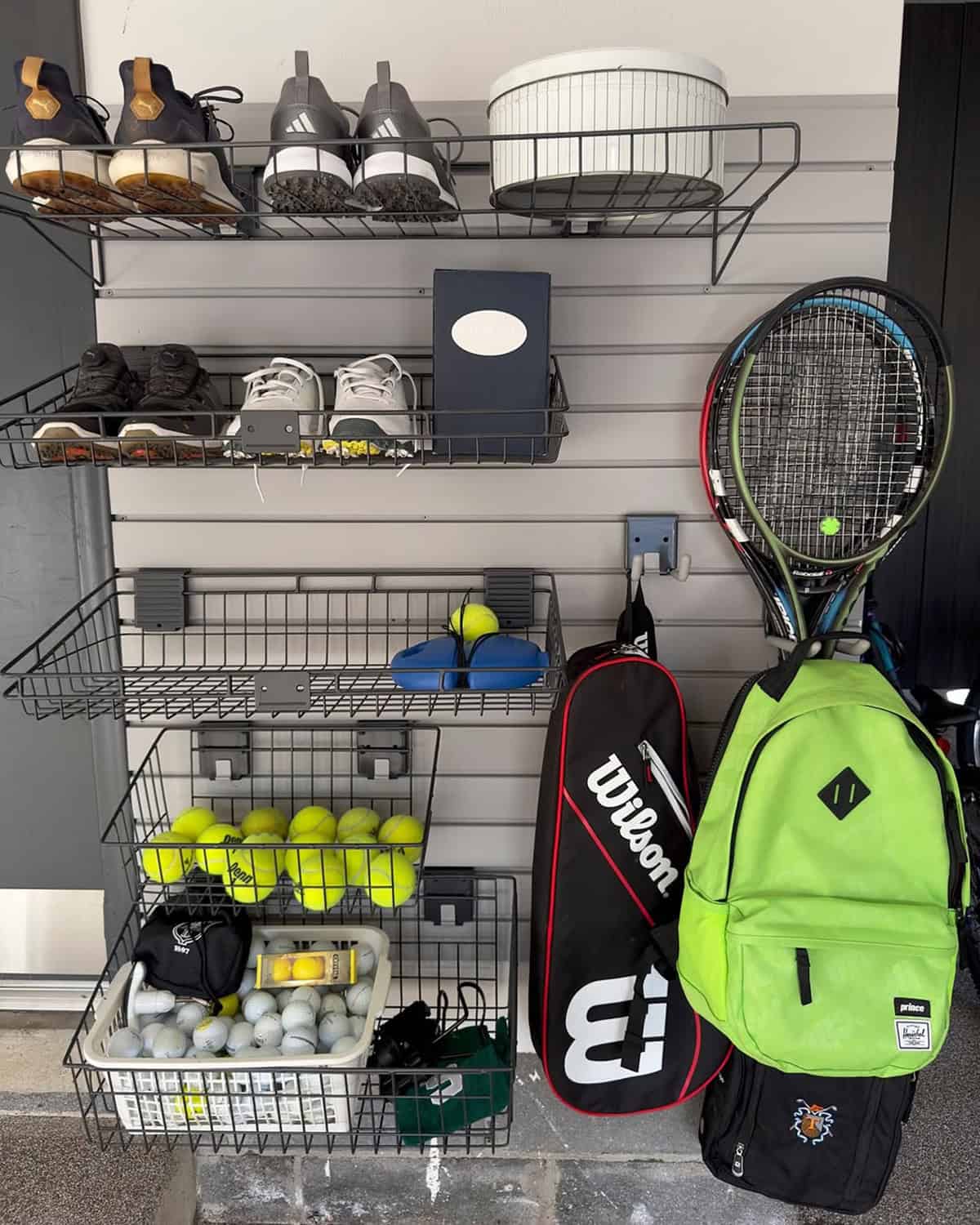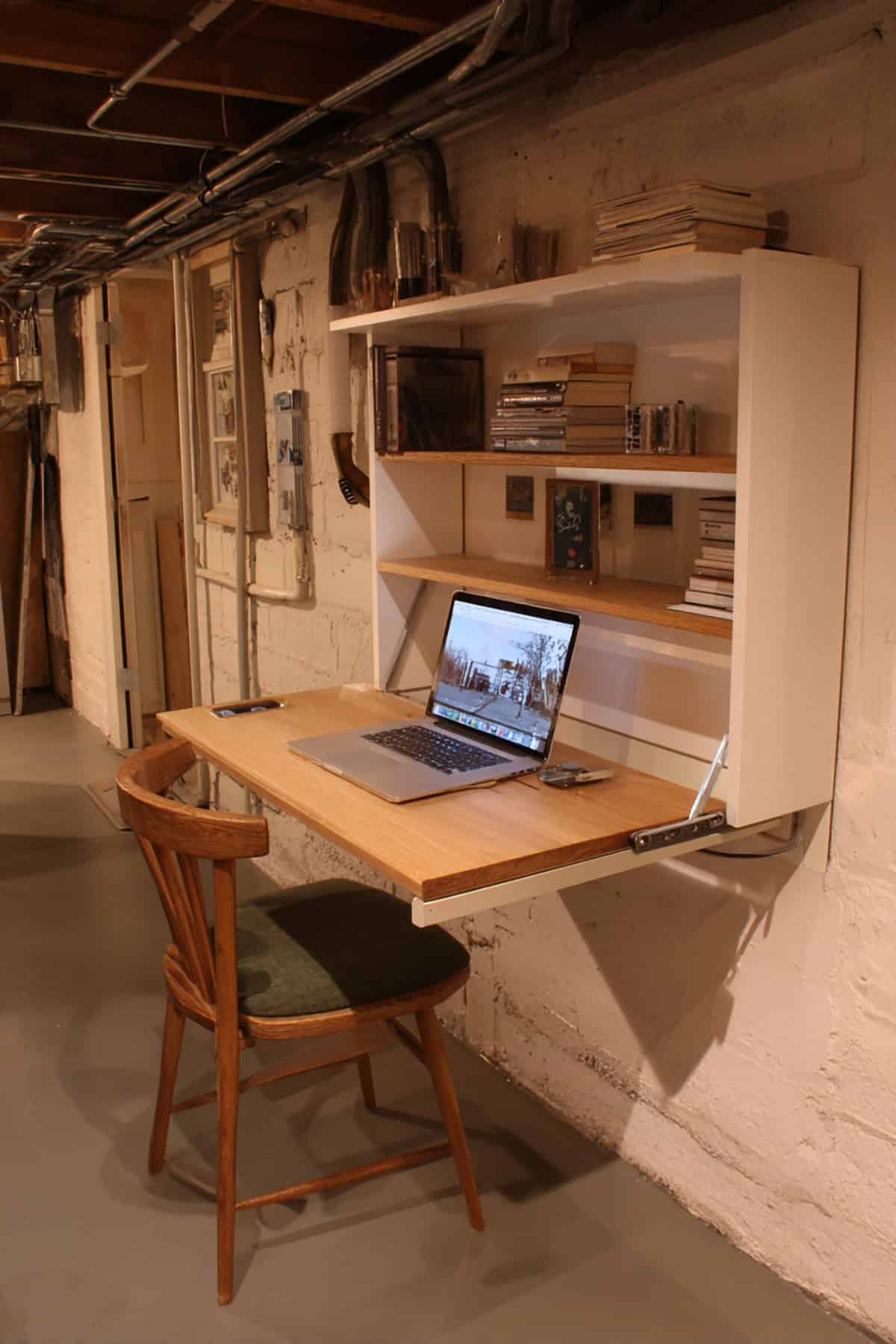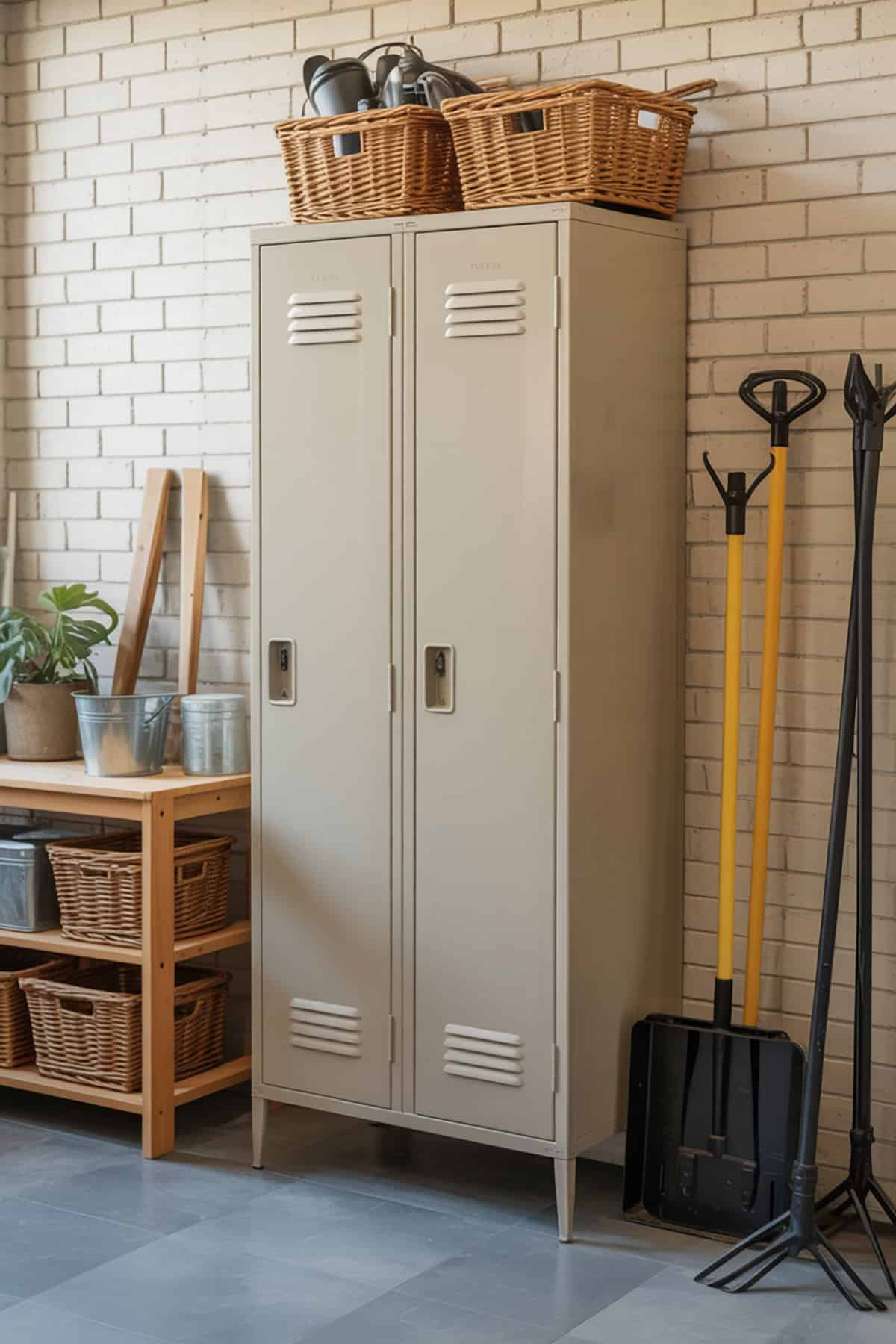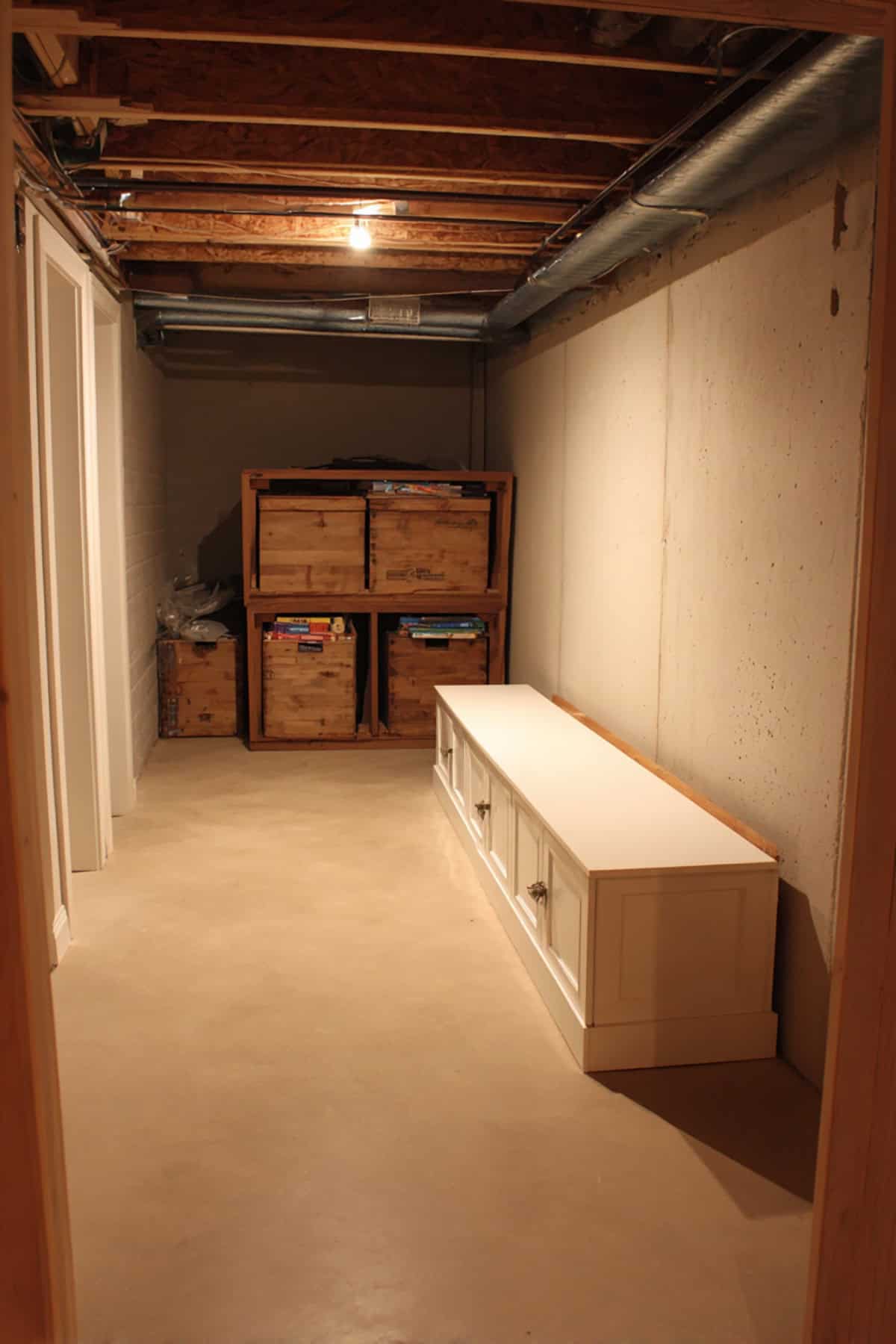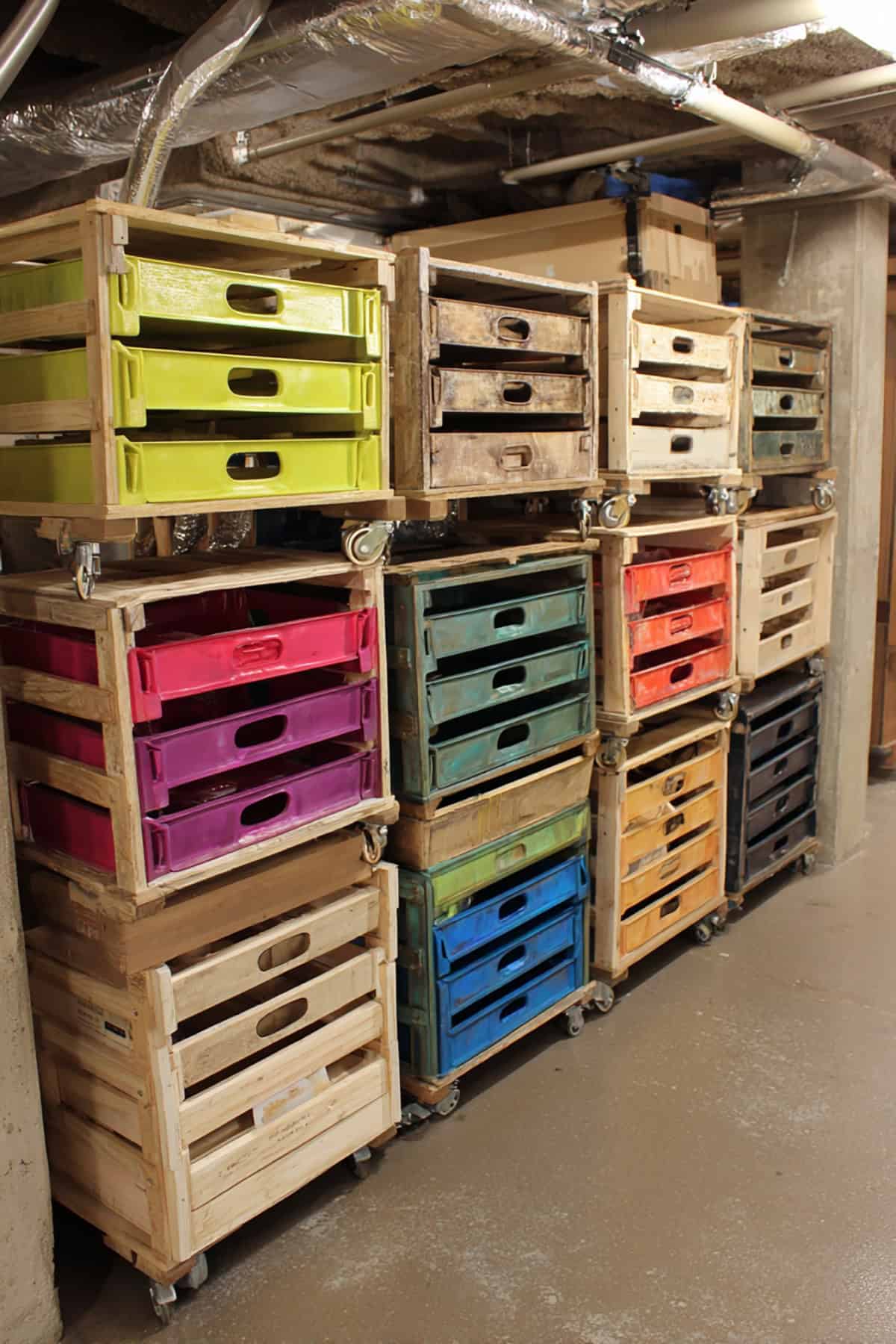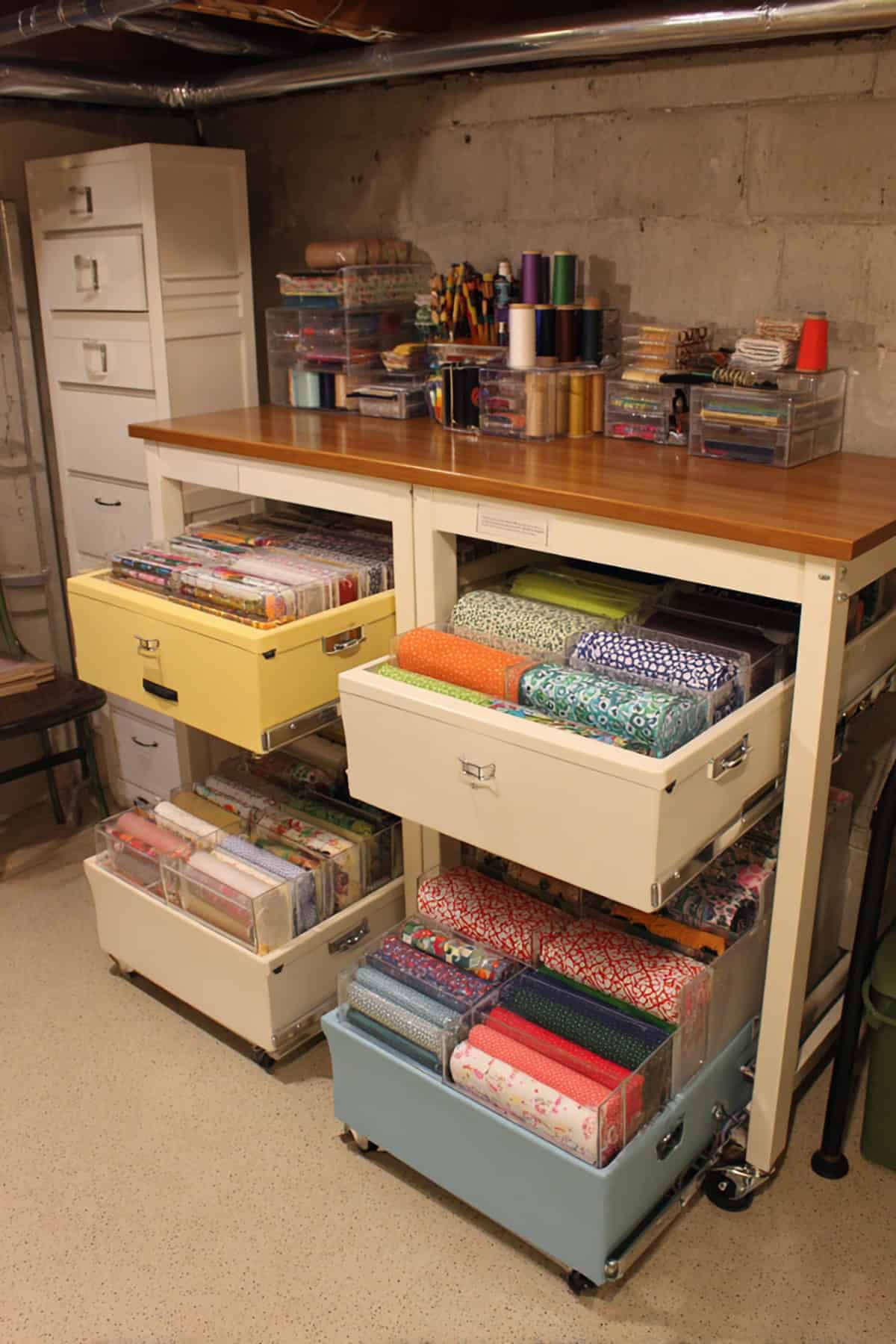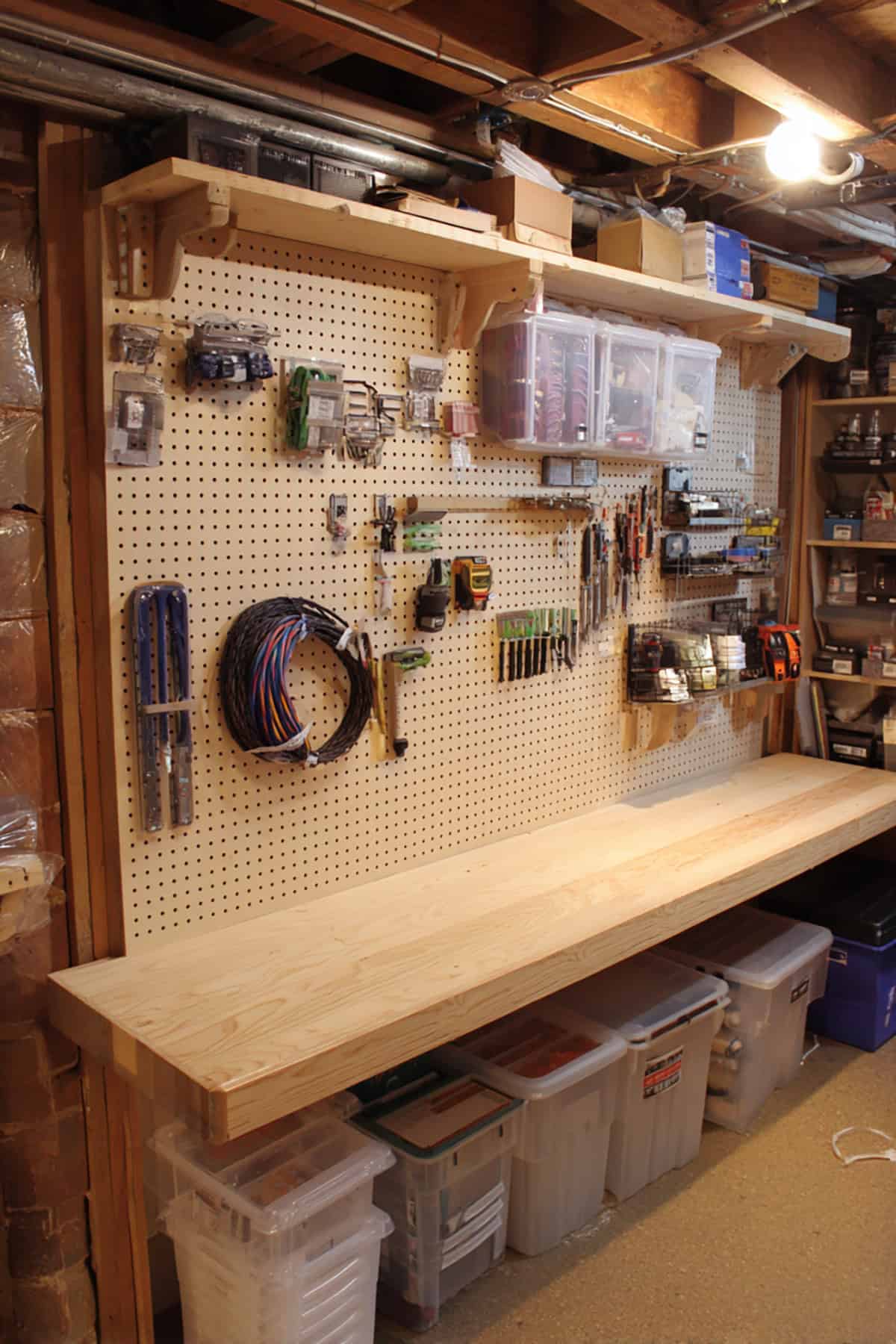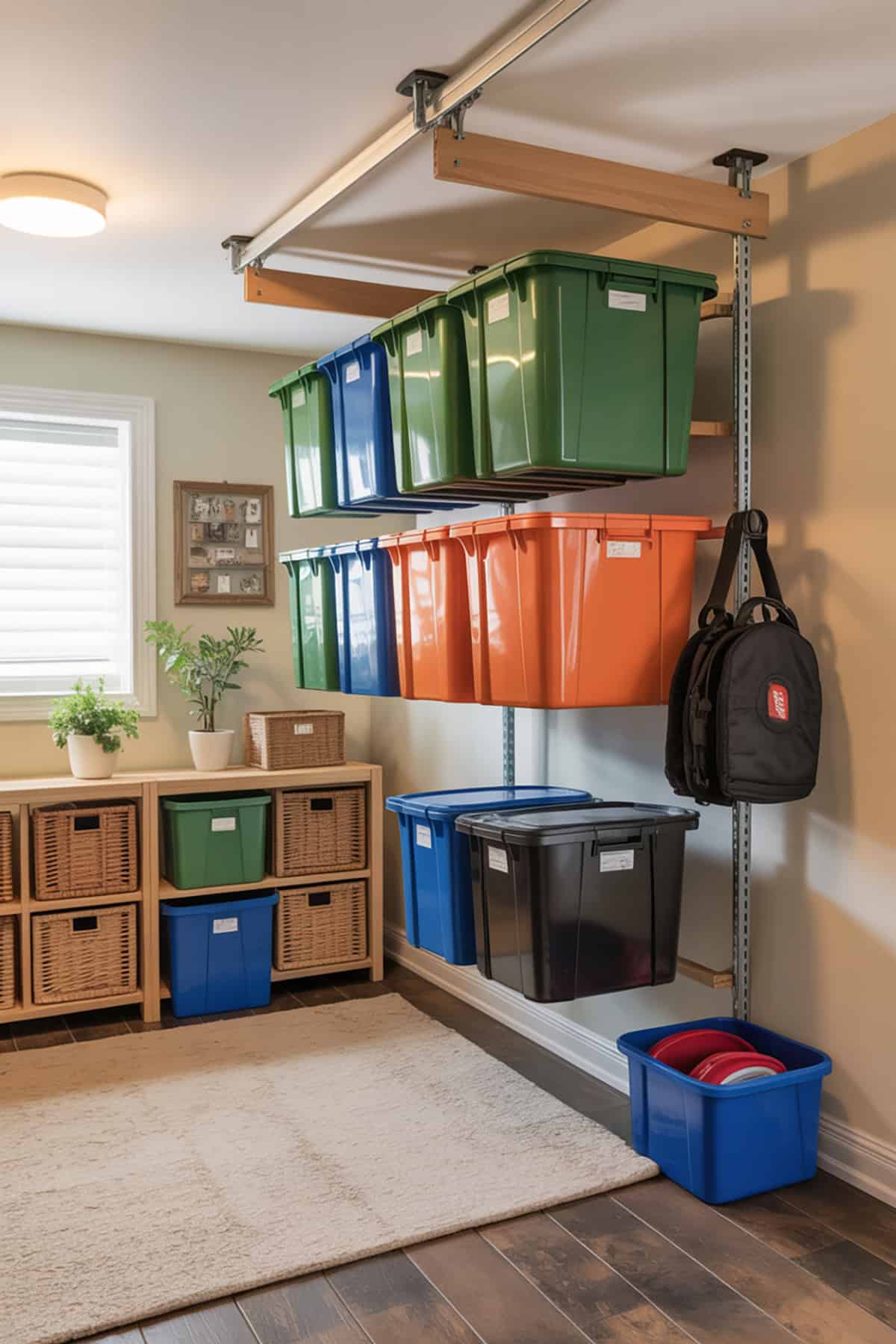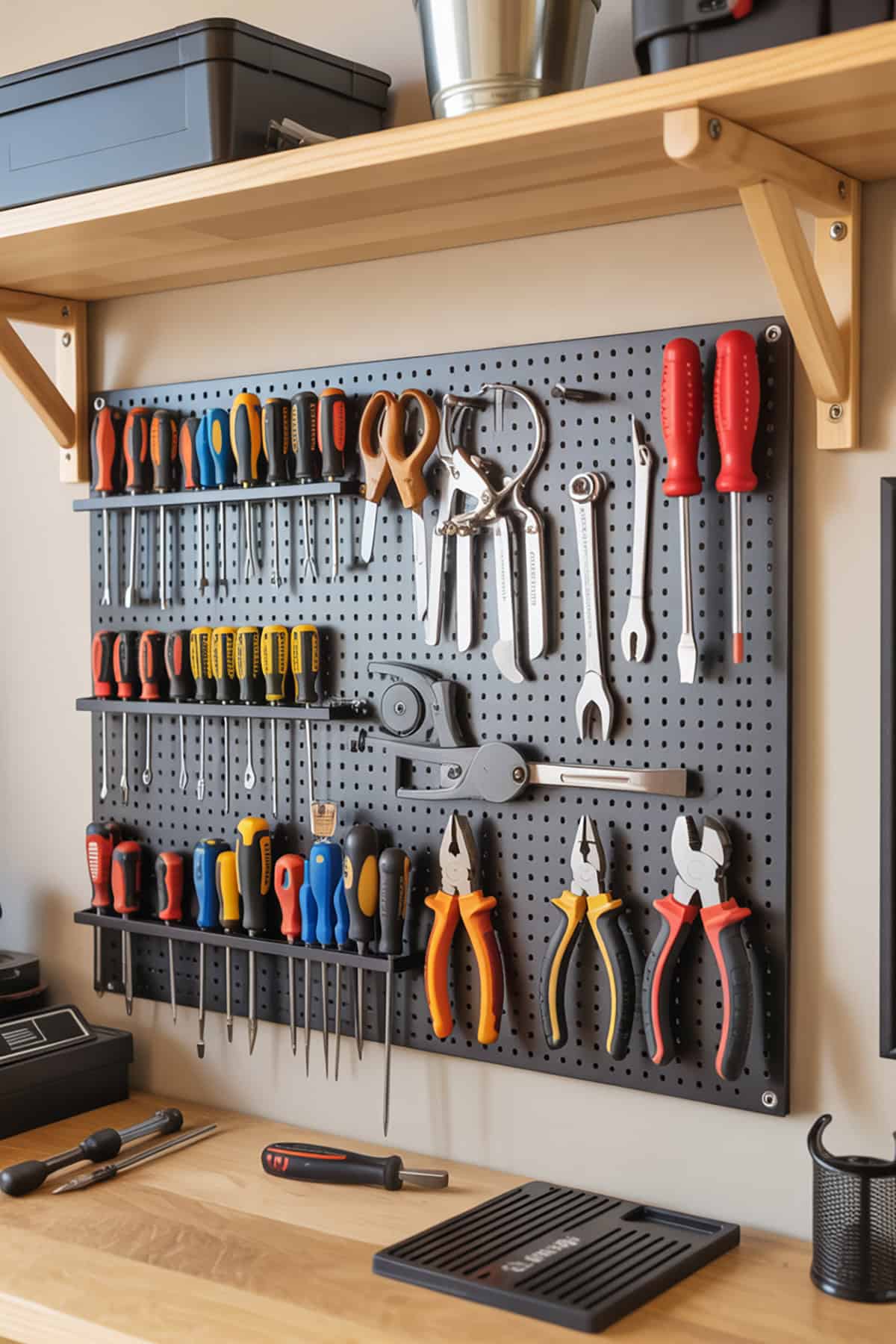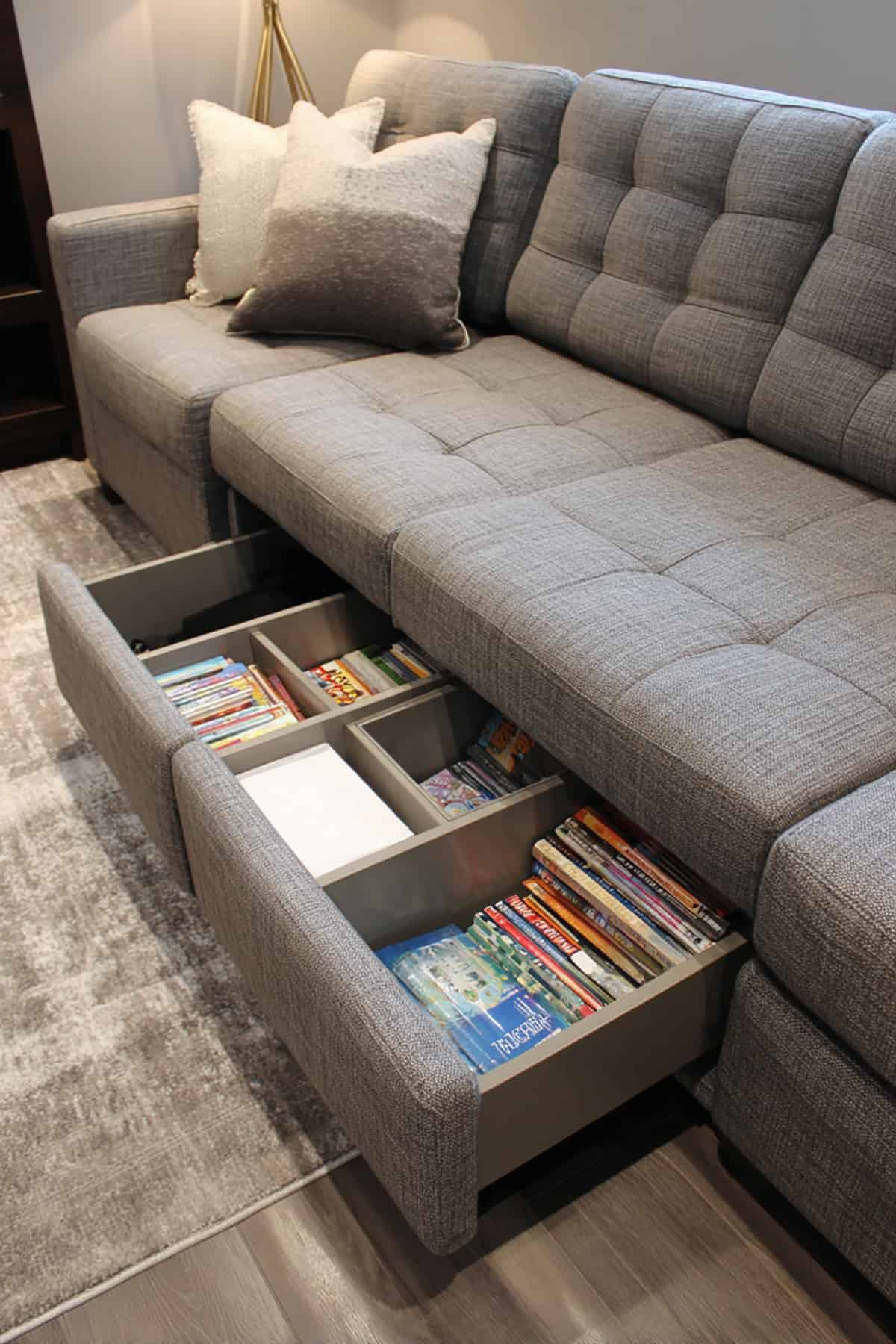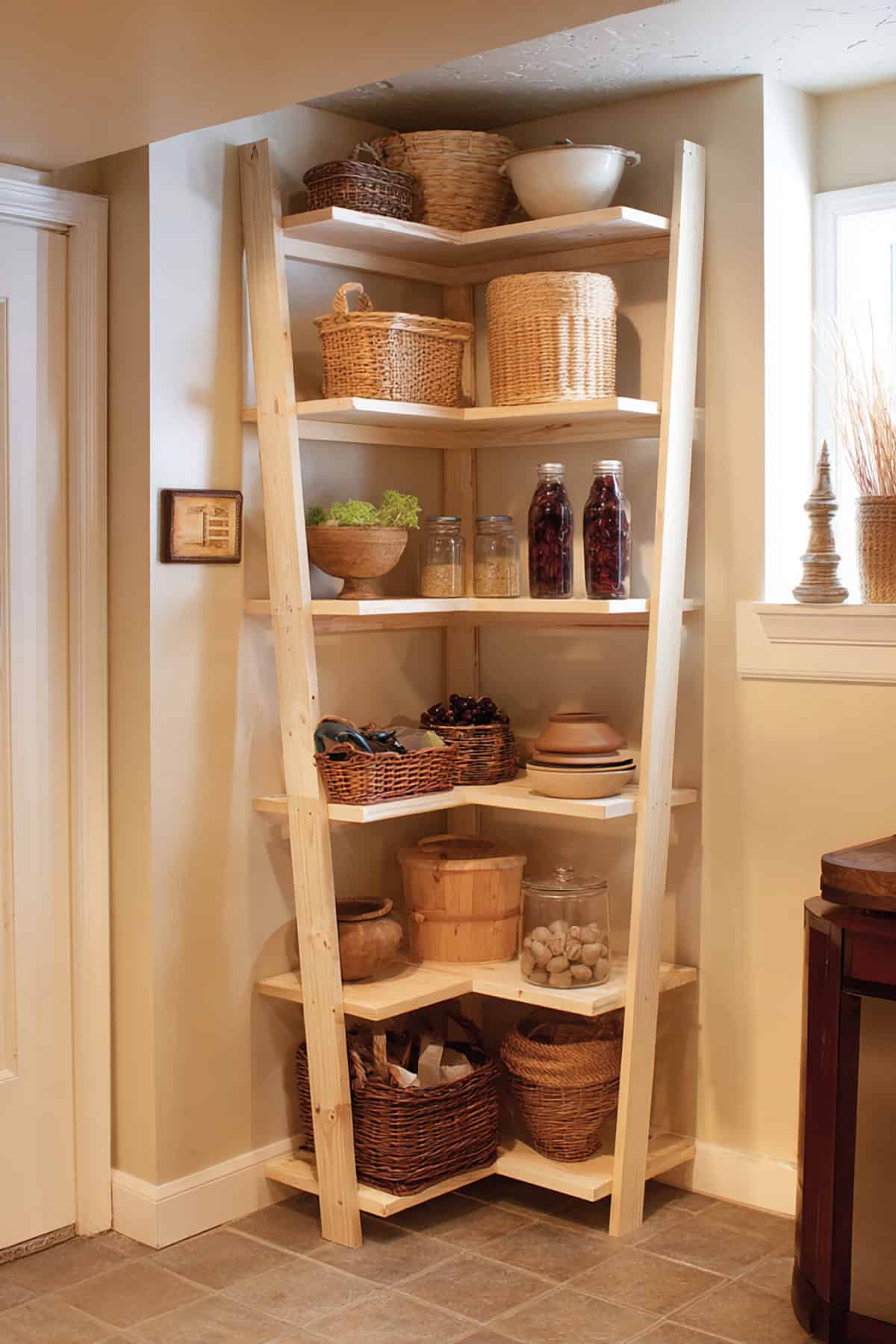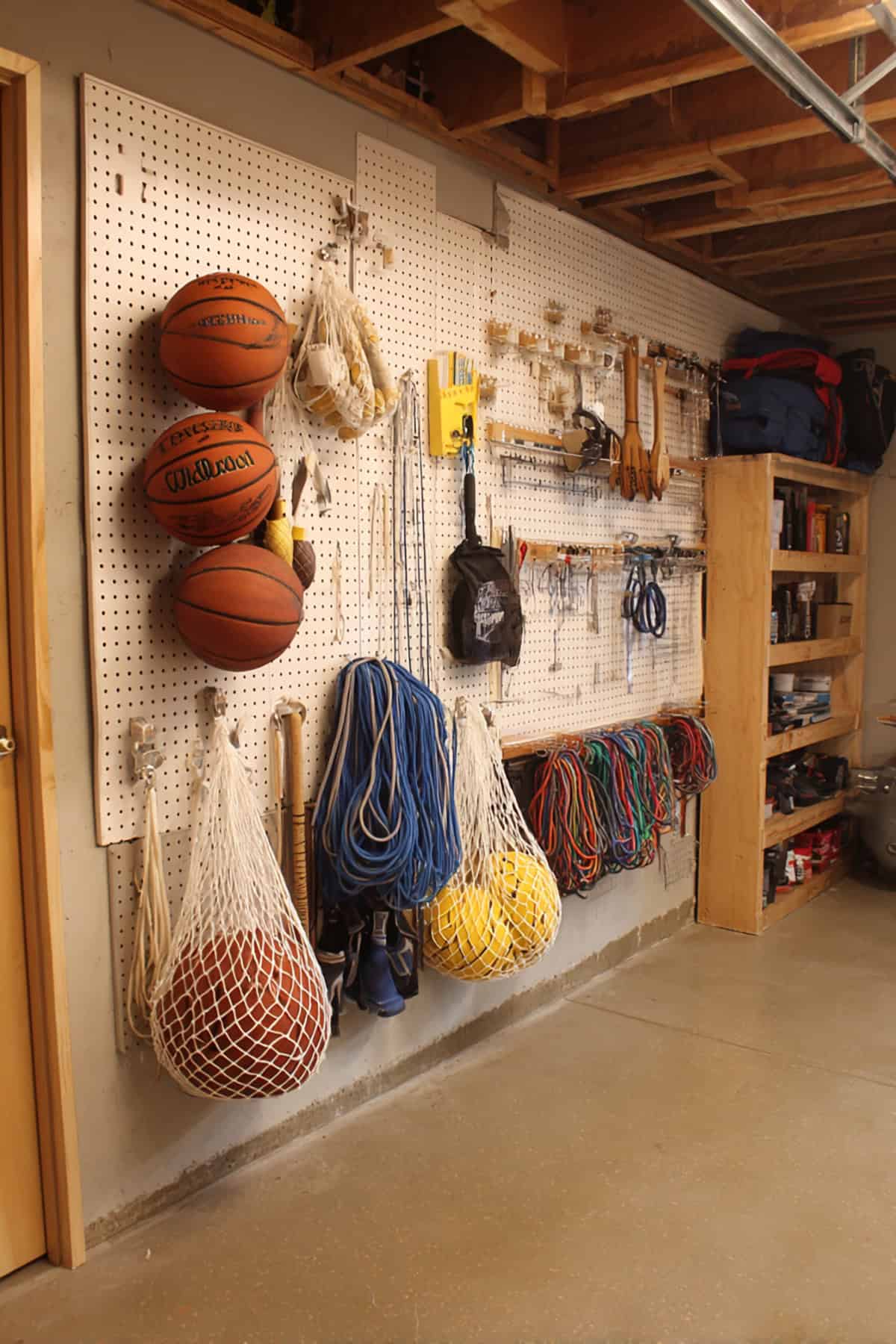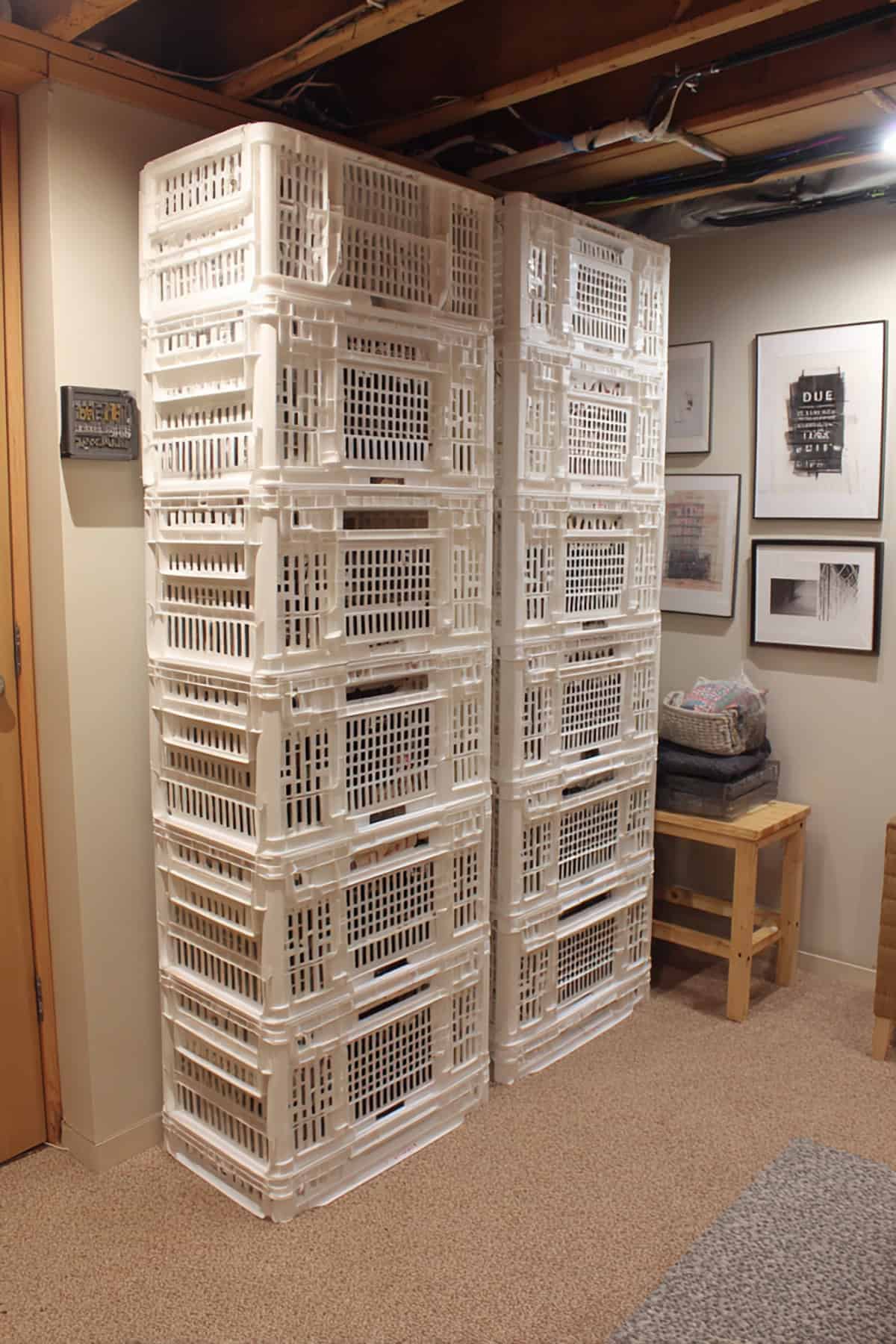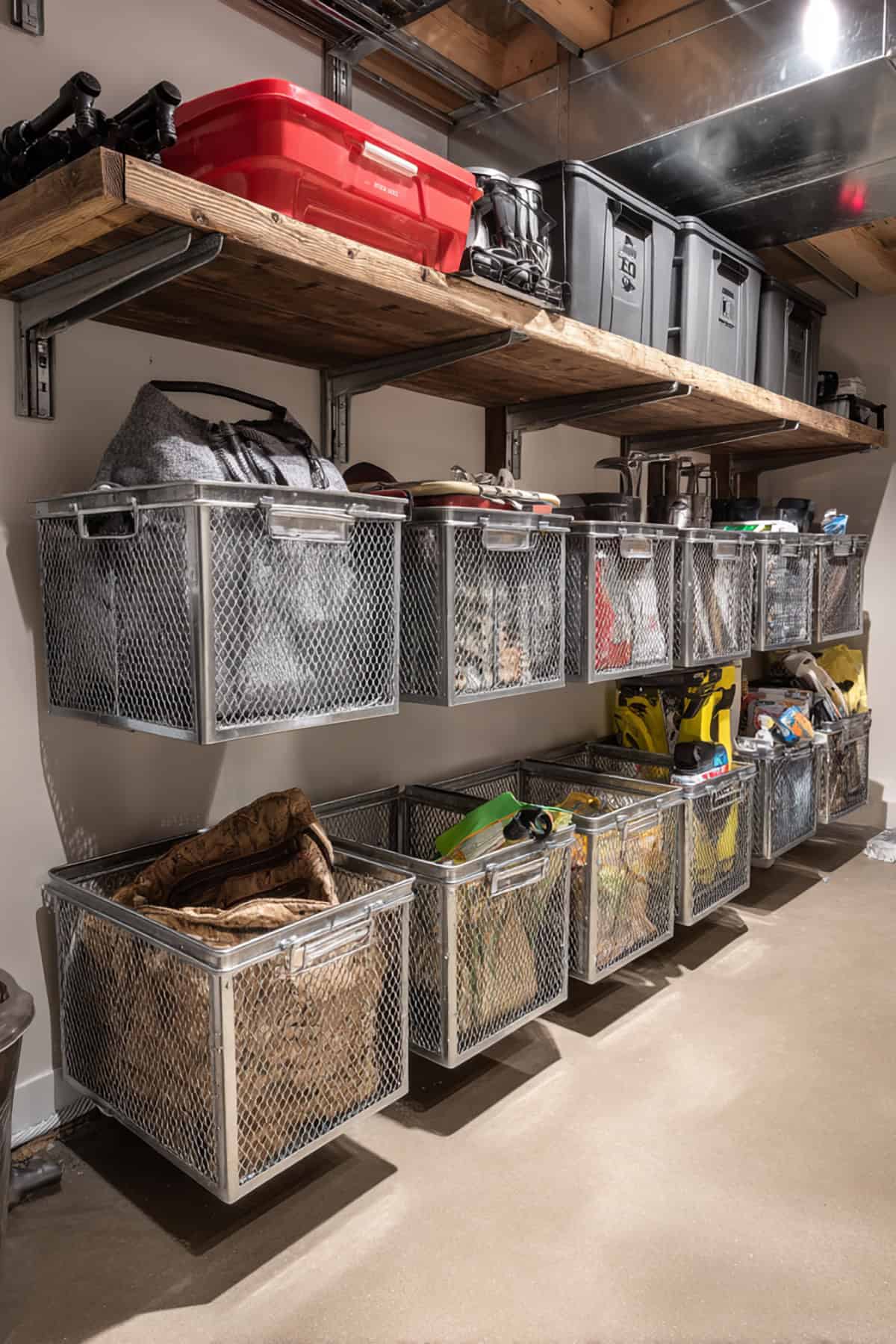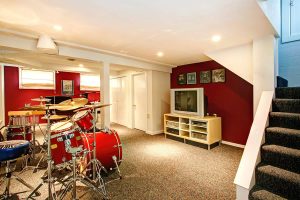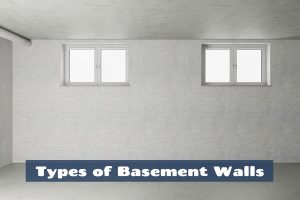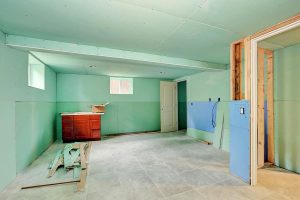Do you dread stepping foot into your basement? Perhaps locating the drawstring to turn on the lights is a thought that terrifies you. With proper basement organization and storage solutions, you can turn any old and dingy basement into one you’re proud of!
39 Basement Storage Ideas
There are countless ways you can improve storage in your basement, from installing shelves to creating zones. Here, we’ll look at 39 basement storage ideas that are bound to motivate you to remodel your basement!
Shelving Everywhere
Credit to afreshspace
Shelves are a homemaker’s best friend. They’re a simple storage solution that is perfect for housing any item you can think of, small or large. There are several shelving variants available, but you can get started with a custom-made model made entirely out of wood. Install brackets, anchor the shelves to the brackets, and add a bit of finish!
Under-the-Stairs Cubbies
Credit to grandprojectcontracting
Beneath your basement stairs are prime real estate for storage. It’s often a forgotten part of the home, but if there’s even a little bit of space, there’s potential. This homeowner came up with an elegant solution underneath their stairs: cubbies! Each of these cubbies holds a different bottle of wine, which they can enjoy every time they chill in the basement.
Color-Coded Containers
Credit to nextchapterwny
Containers, plastic bins, etc.—these are highly versatile storage compartments that fit well in any part of the home. If you don’t want to spend more time in the basement than necessary, it’s a good idea to create an organization system. That way, you won’t have to open every bin to locate that one item you’re looking for. You can follow this homeowner’s steps and use color-coded bins, but there are countless other possibilities.
Designated Zones
Credit to abbyorganizes
A designated zone is a part of the basement that’s designed for a specific purpose. Imagine something you enjoy doing and having a spot to do that in your basement. If you’re a gym rat, why not create a gym zone in your basement? If you’re big on arts and crafts, set up a crafting table in the basement and do your thing! At the very least, your supplies won’t end up all over the place!
Built-ins
Credit to bender_homes
For those who want to convert an old basement into a room for relaxation, this one’s for you. To get started, think about the different furniture you would want in your living room, and instead, move them underground to the basement. Here, we see a picture of built-ins lining an entire wall. There’s plenty of storage space in the form of cabinets, and there’s still tons of room for a TV and a sound system.
Multifunctional Areas
Credit to meadowlarkbuild
While basements are generally used for storage, that doesn’t mean you can’t do anything else there. If you don’t have a laundry room, perhaps it’s time to set up base in your basement. While you’re designing the new multifunctional area, think about different storage solutions you can install to promote organization. Shelves, cabinets, drawers, and long countertops are just a few examples.
Bookcase
Credit to creativewood_fc
The sad truth is people don’t read as much as they should, but you don’t have to end up that way! Simply move a bookcase to your basement, and voila! You have a place to sit back, relax, and get lost in a book! Decorate your bookcase with other things, such as souvenirs from old trips, small potted plants, and small wicker baskets for containing smaller items.
Organizer Wall
Credit to simplybuffalo
An organizer wall is a wall dedicated to keeping your belongings organized, as the name suggests. These walls are mainly used for storing small items to clear up floor and desktop space. They typically come in the form of pegboards, but you can even use Velcro for lighter items. Keep an organizer wall in your basement if you find your workstation cluttered.
Bar Area
Credit to finishedbasement
Do you plan on turning your basement into a place for entertainment? Well, you can’t keep your guests entertained without giving them something to drink! Design a bar area in your basement to not only keep your beverage supplies in order but to keep the drinks flowing. If you’re not into wetting your whistle, convert a portion of your garage into a café corner!
Home Office
Credit to matrixbasementfinishing
Perhaps the noise of your first or second floor is unconducive for doing work at home. If this is the case, then it might be time to move your home office unit underground. Install partitions in your basement to create a cozy environment for you, your work desk, and your laptop. Use the basement office as a means to store important documents.
Media Center
Credit to finishedbasementnj
There are several pieces of furniture that are involved in a media center. For starters, the built-ins surrounding your TV will play an important role in keeping your entertainment system organized. Not only that, but you can use storage ottomans to kick your feet up while also containing a few smaller items. A side table, a coffee table, and a few wicker baskets in the immediate area can also help.
Play Zone
Credit to themolleybeffect
There’s no denying that children are messy. And a huge part of the mess they leave is their scattered toys. Consider moving your child’s play area to the basement, where their toys and craft supplies are localized in a small part of the room. Use partitions to designate play zones, keep chests for their toys, and include lots of lighting.
Sliding Ladder
Credit to innovative designbuild
A sliding ladder is an indirect method of maintaining organization in your garage. Take a look at the air space in your garage and see what overhead storage solutions are suitable. You may need a ladder to access higher-up spaces. You can hang the ladder on sturdy wall hooks in your basement, or you can install a sliding ladder to reach overhead storage spaces.
Niche
Credit to theapplebydesign
For those that are remodeling the basement, you may want to consider constructing a niche down there. Niches can serve as a spot to store a variety of items on shelves or cubbies. The greatest benefit of niches is that they are flush with the adjacent walls, so you don’t have to worry about stubbing your toe into any corners. Use your newly made niche to keep board games, toys, and even collectibles safe in the basement.
Labeling System
Credit to gridandglam
Creating more storage in your basement is one thing, but organization is an entirely different beast. With the numerous boxes and bins in your basement, how will you ever keep track of where everything is? A simple yet effective solution is a labeling system, where you label every container with the type of content held within. The key here is to label everything correctly and store everything in the correctly labeled container!
Tool Organizers
Credit to simplybuffalo
It’s easy to lose track of your manual tools, especially when undergoing a large DIY project. You can somewhat alleviate the problem of missing tools by keeping a tool organizer in the basement. These are simple containers designed to store specific tools. Some have foam cut-outs made for specific items, while others are simple bins that fit anything and everything. You can even use PVC pipes to keep long, narrow tools in check.
Freestanding Shelves
Credit to simplybuffalo
There are a million and one different types of shelves, with freestanding shelves being among the most common. Unlike floating shelves, freestanding shelves have leg supports to keep the shelf in place. They may take up floor space, but the legs provide sturdiness to store bulkier items. A stainless-steel shelf works best in basements where moisture may be a problem. It may also be time to get a dehumidifier for your basement, if that’s the case!
Wine Cellar
Credit to kellsconstruction
Basements are perfect for storing wine, hence why they’re often used as wine cellars. The lack of vibrations, abundant lights, and heat create the perfect environment for keeping wine from going bad. Cellars used specifically for wine will require cubbies, racks, wall-mounted hooks, and enough space for all your wine boxes. Even if you don’t drink wine, you can use a cellar to keep root veggies from sprouting.
Mudroom
Credit to studioedesignco
Do you want to convert your basement into an entryway? Or perhaps you have an entryway to your basement already? Whatever the case is, you will need a mudroom to keep mud from dragging into the rest of your basement. Mudroom units are a must-have for those with large families. Keep a shoe rack and several lockers in the room to keep everyone’s belongings organized. A few baskets and bins will work here for storing sports supplies, too.
File Cabinet
Credit to libertucci
If you don’t use your basement very often, use the room as a way to keep your important documents out of harm’s way. A file cabinet can help keep your work documents, or any document for that matter, organized and away from dust. Just make sure the basement isn’t prone to flooding or water damage. Did you get a dehumidifier for your basement yet?
Open Shelving
Credit to njclosetking
Open shelving is a simple shelving concept. It relies on the lack of doors and drawers to create the illusion of a wider space. Seeing the wall behind the shelves adds to the airiness of the room. The key is to go light on the number of things you store on your shelves. Also, due to the lack of doors, you may need to frequently dust the shelves.
Slat Wall
Credit to closetconnections_
A slat wall is a wall with slats. But the slats are there not just for show—they can be used as an anchoring system for smaller items. Keep a few wire racks and hooks in the slats to instantly create storage space on your walls. Wall slats are perfect if you don’t want shelves jutting out of the wall and limiting movement beneath them.
Foldable Wall-Mounted Desk
Wall-mounted furniture can make the most of tight or shared spaces. Fold-down desks are ideal for basements that serve multiple functions. They stay out of the way when not in use but still offer a full workspace when needed. Integrated pegboards or storage backs help organize tools and supplies.
Tall Locker Cabinets
In shared storage zones, having dedicated compartments makes a difference. Tall metal lockers can divide sports gear, tools, or cleaning supplies by family member or category. The enclosed design hides visual clutter and offers better structure than open shelving. In a utility space, they add order without feeling bulky.
Storage Benches Along Walls
Multifunctional furniture plays a big role in making small spaces work harder. Storage benches provide a mix of seating and concealed organization. They’re especially useful in basement entryways or long corridors. Beneath the bench, compartments can hold anything from boots to blankets.
Stackable Rolling Crates
Stackable storage keeps things flexible and modular. Plastic crates can be rearranged or expanded as your storage needs change. Rolling bases make them easy to move, even when full. They’re practical for sorting supplies, gear, or overflow items in an adaptable layout.
Seasonal Décor Storage Cubes
Labeling and rotation are key to seasonal storage. Fabric cubes or bins let you group decorations by holiday and tuck them away when not needed. Their soft sides protect delicate items while still stacking easily. It’s a smart way to avoid clutter from out-of-season décor.
Rolling Bins for Craft Supplies
Movable storage works well in creative spaces. Rolling bins let you transport materials where you need them, then return everything to its place when done. Wire or mesh bins help you see contents without rummaging. They’re especially handy for tools, papers, and smaller craft accessories.
Pull-Out Wire Baskets on Tracks
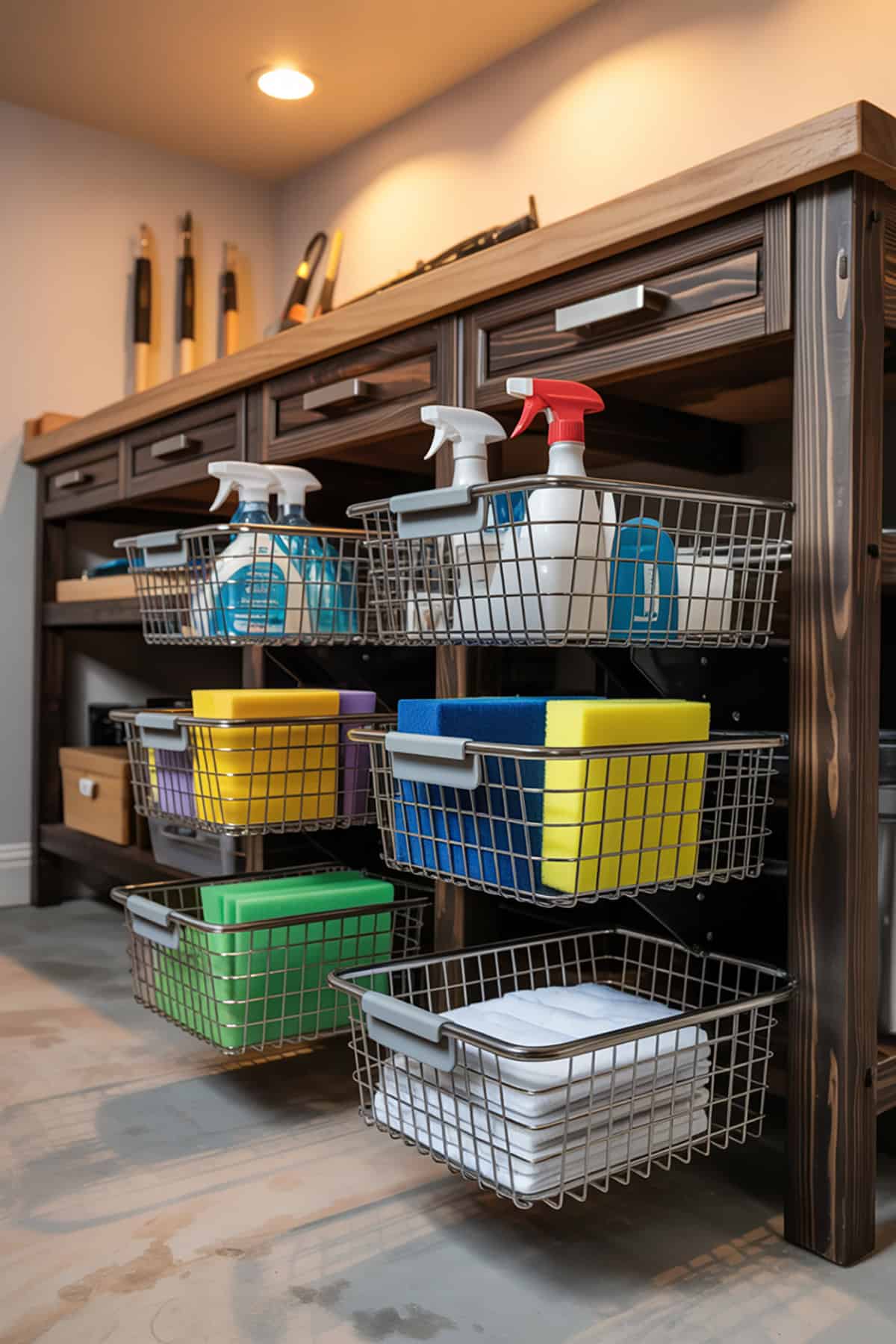
Pegboard Swing Panels
When one wall isn’t enough, pivoting panels give you more tool storage in the same footprint. Pegboards mounted on swing arms hold hammers, screwdrivers, and garden gear all in one compact area. You can organize by type and rotate the panel to grab what you need. It feels more efficient than cramming everything onto one board.
Overhead Pulley Storage System
If your floor space is maxed out, look up. Pulley systems take bins off the ground and store them just below the ceiling. This works well for bulky items like seasonal gear or camping equipment. The setup shown here lifts multiple totes above a garage or basement zone, creating room below for everyday use.
Magnetic Mounting Boards for Small Tools
Open wall space shouldn’t go to waste. Magnetic boards hold frequently used tools so they’re always in sight. This kind of setup is ideal near a basement workbench where grabbing a wrench or pliers quickly makes all the difference. Clean and functional, it keeps drawers from becoming junk piles.
Low Profile Storage Drawers Under Sofas
Built-in storage can make a big difference in small basement living areas. Furniture that doubles as storage helps reduce clutter and keeps everyday items close by. This sectional includes wide drawers hidden beneath the cushions, giving you quick access to books, games, or electronics. Each drawer includes dividers to keep items sorted. The matching fabric finish makes the drawers blend into the sofa design. It’s a smart way to maximize space without sacrificing comfort or style.
Ladder-Back Shelves for Narrow Spaces
Compact shelving offers a solution for awkward corners and tight wall spaces. Open designs make a room feel less crowded and more accessible.
This ladder-back shelf system leans gently between two walls and holds everything from baskets to jars and cookware. The natural wood keeps it warm and welcoming. You can store pantry goods, kitchen accessories, or even craft supplies here. This setup fits well in kitchens, mudrooms, or small basements where space feels limited.
Hooks and Nets for Sports Gear
Wall-mounted storage helps keep gear organized and off the ground. Pegboards, hooks, and nets allow you to hang or display items in plain view.
In this setup, balls, ropes, and sports accessories each have their place on a large pegboard. Mesh nets hold basketballs and medicine balls, while hooks line up gloves, cords, and tools. It’s ideal for an active household with frequent gear use. You can grab what you need without digging through piles.
Expandable Plastic Crate Towers
Modular systems give you flexibility when storage needs change. Lightweight plastic crates can stack vertically and still remain easy to move or reconfigure. Here, tall columns of uniform crates sit neatly along a wall in a finished basement. Their vented sides allow airflow, which suits items like linens, fabric, or seasonal accessories. The crates create a tidy, scalable system without requiring built-in cabinetry. You can shift or reduce the towers depending on what you store.
Expandable Metal Bins on Runners
Wall-mounted storage frees up valuable floor space and keeps things visible. Mesh bins with open fronts help you sort and access supplies easily.
This layout includes two long rows of metal drawers beneath a thick wooden shelf. The bins glide forward on tracks and hold everything from work gloves to power tools. Above them, heavy-duty totes sit on the wood platform for more rugged storage. It’s a clean, structured option for high-use utility spaces.
Drop-Down Overhead Tote Brackets
Ceiling-mounted systems help you use the most overlooked storage space in the basement: overhead. These designs work well for basements or garages where floor space stays busy.
In this example, net-style brackets hang from the ceiling to hold large baskets and bins. The wire supports secure bulky items like holiday décor or old luggage. You gain additional capacity without blocking your walkways. It keeps long-term storage separate from your daily-use zones.
Drawer Units Under Stair Landing
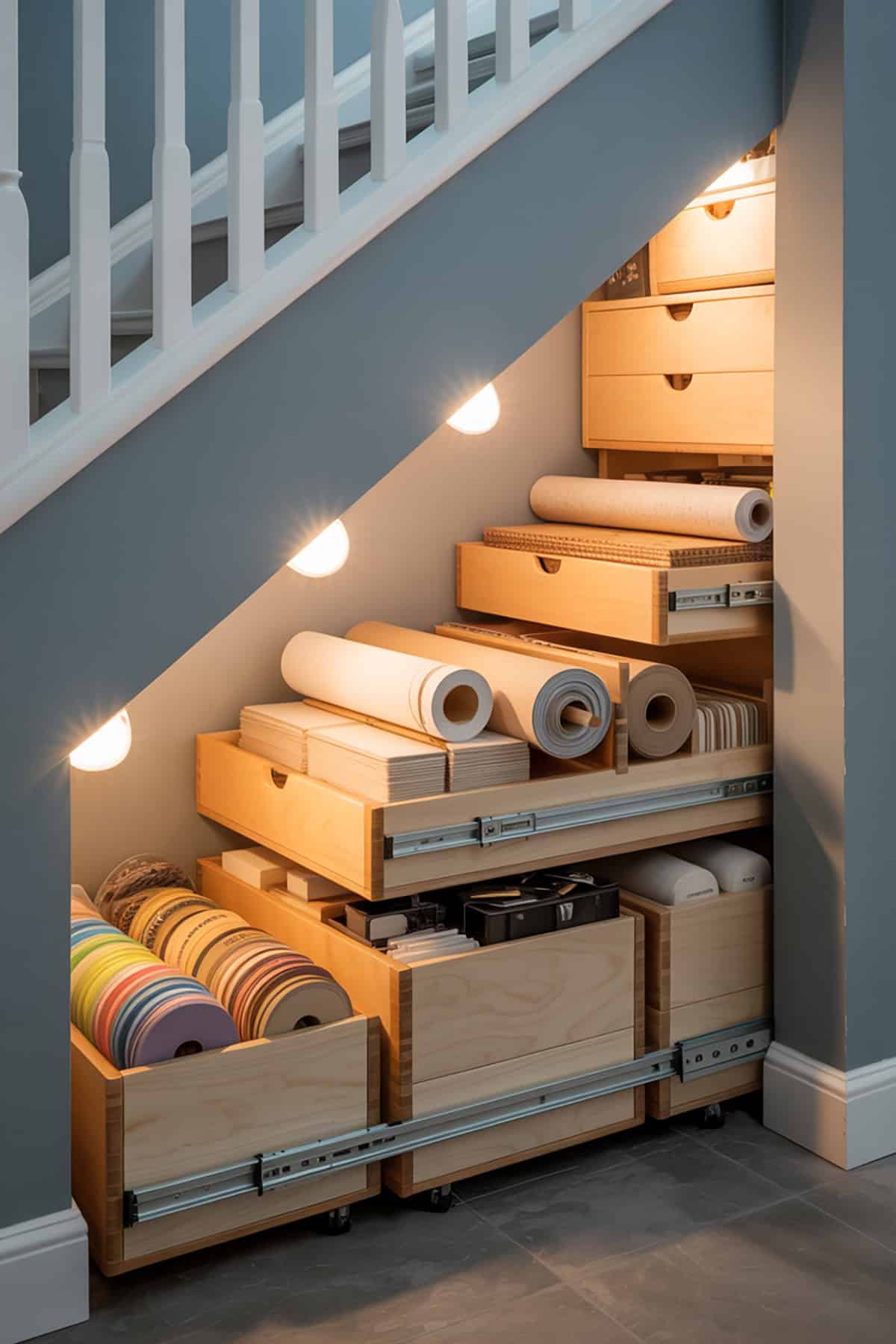
Unused corners in the basement can serve as clever storage zones when planned correctly. The space under stairs often goes to waste unless custom units fill the gap. This setup transforms that area into stacked drawers of various sizes.
Each drawer fits snugly under the angled ceiling and rolls out on tracks. Some hold wallpaper rolls, while others organize electronics and supplies. Built-in lighting enhances function and visibility. It turns a tight spot into a clean and organized storage wall.
